Philips PUS8959, also known by other designations under the PUS89 abbreviation (depending on the sales network), is a model from the popular series The One. Its biggest distinguishing feature is the Ambilight system, which still makes a great impression. The three-sided backlighting adapts to the picture on the screen, making movies, series, or games literally extend beyond the edges of the TV. The One is also a good option for gamers. The 120 Hz panel and low input lag ensure that games run smoothly, and the motion on the screen is clear. On the console, we tested several dynamic titles, and the TV handled them without any problems – no stutters or delays. Additionally, HGiG support allows for better reproduction of HDR effects in games. This is a great solution if we care about the image matching what the creators intended. The picture quality is at a good level, especially during the day. With a brightness of 550 nits, The One performs well even in well-lit rooms, and Dolby Vision in HDR films delivers vivid colors and sharp details. However, the ADS panel has its limitations – the blacks in dark scenes resemble a gray shade more, which can be noticeable when watching in a dimly lit room. When we watched movies with the lights off, the lack of depth in the blacks was somewhat evident. The Titan OS operating system is something that still needs refinement. It is fast, but the limited number of applications, such as the lack of Spotify or TVN Player, can be frustrating for those used to more advanced platforms like GoogleTV. When daily using Netflix or YouTube, it works flawlessly, but if we expect more advanced features, the system may not meet expectations. Overall, Philips The One is a good choice in its price category. The Ambilight system impresses and significantly enhances the viewing experience, especially in the evening. It is also a solid option for gamers, thanks to smooth image and low input lag. Although the blacks are not perfect and the operating system needs refinement, the TV performs well in everyday use. For fans of unique solutions like Ambilight, this is a proposition that definitely deserves attention.
- Matching (Score)
- Our verdict
- TV appearance
- Where to buy
- Contrast and black detail
- HDR effect quality
- Factory color reproduction
- Color reproduction after calibration
- Smoothness of tonal transitions
- Image scaling and smoothness of tonal transitions
- Blur and motion smoothness
- Console compatibility and gaming features
- Input lag
- Compatibility with PC
- Viewing angles
- TV efficiency during daytime
- Details about the matrix
- TV features
- Apps
- Playing files from USB
- Sound
Philips The One (PUS8959 / PUS8919 / PUS8909 / PUS8949 vs Samsung Q8F
Direct compare
Check the best price offer:
Philips The One (PUS8959 / PUS8919 / PUS8909 / PUS8949Check the best price offer:
Samsung Q8FPUS8959 / PUS8919 / The One / PUS8909 / PUS8949

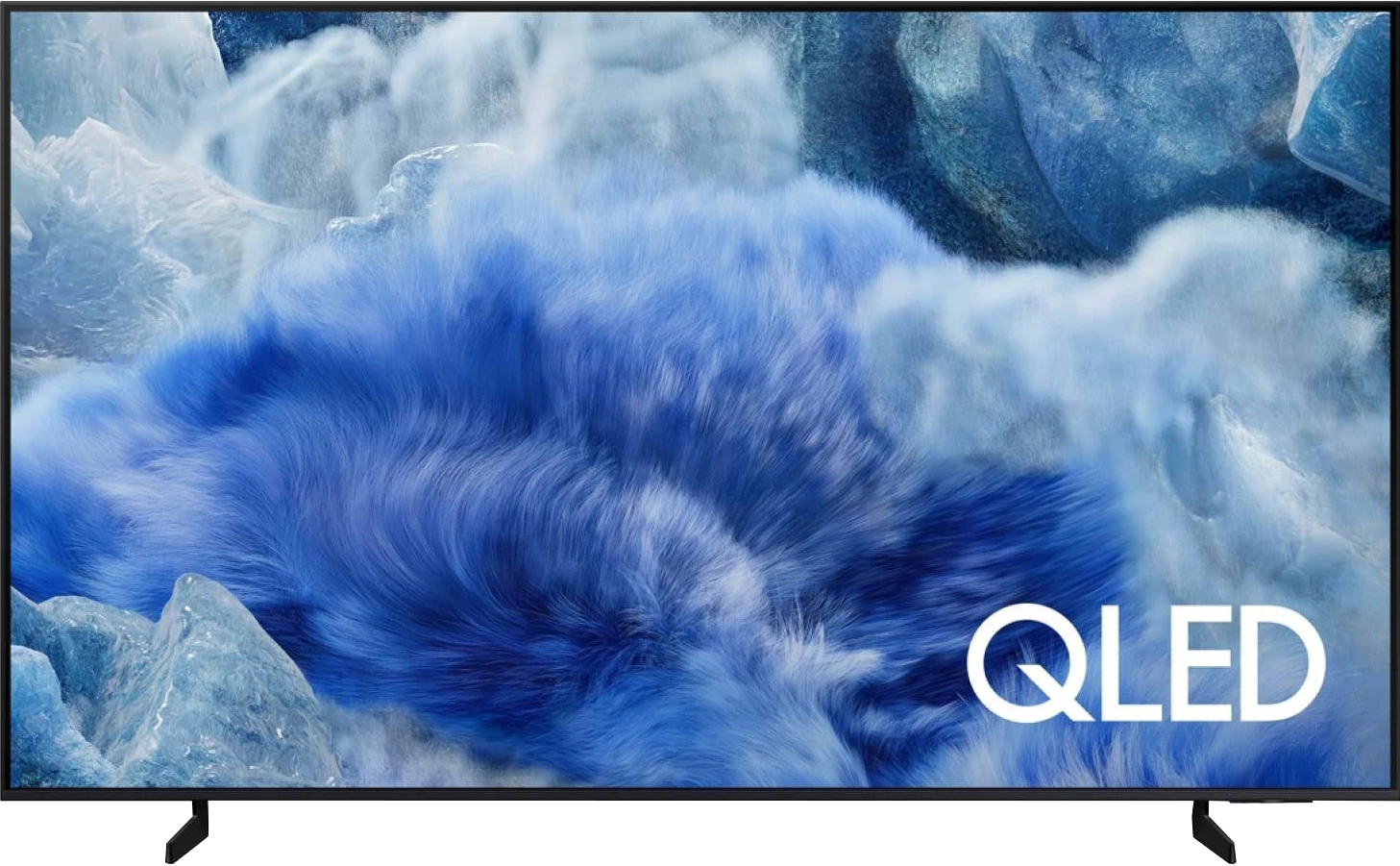
Panel type: LCD IPS
Resolution: 3840x2160
System: Titan OS
Model year: 2024
Complete the survey to find out the result

Panel type: LCD VA
Resolution: 3840x2160
System: Tizen
Model year: 2025
Complete the survey to find out the result

Overall rating
6.8
6.3
Movies and series in UHD quality
6.6
6.3
Classic TV, YouTube
6.3
6.0
Sports broadcasts (TV and apps)
7.2
5.1
Gaming on console
8.5
6.9
TV as a computer monitor
8.0
6.0
Watching in bright light
6.1
5.6
Utility functions
6.1
7.3
Apps
6.2
8.7
Sound quality
6.4
6.0
Complete the survey to find out what fits your preferences
Advantages
Ambilight System: Triple-sided backlighting
120Hz Panel - smooth image
Additional features for gamers
Satisfactory level of brightness that works well during the day
Wide viewing angles
Solid contrast thanks to the VA panel
Pretty good brightness in SDR and HDR (up to about 500 nits)
Satin finish handles reflections well
Tizen operating system – fast, intuitive, with a rich selection of apps
Solar remote with USB-C charging
Integration with the SmartThings ecosystem
Great input lag
Good font readability when working with a PC, suitable as a monitor for text work
Adjustable stand on multiple planes
Disadvantages
Poor black quality
Annoying "hybrid" remote
Titan OS: Still in development, with a limited number of applications and not very functional compared to more advanced platforms
Heavily limited features for gamers (no VRR in practice, no HGiG)*,
No recording function on USB or PiP
Average digital image processing
*We hope that the promises made in the advertising brochures will be quickly fulfilled through software updates.
Our verdict
Samsung Q8F is quite a successful continuation of the Q67D model. It offers similar picture quality in HDR content, and with a brightness of around 500 nits, it can create an effect that is hard to call average. It is also aided by support for the HDR10+ format, which has been realistically competing with Dolby Vision for some time and provides comparable experiences in many productions. The contrast is also a plus—given its VA panel, it performs solidly and allows for pleasant blacks in movies and series. However, the biggest advantage of the Q8F remains the operating system. Tizen works quickly, provides access to many applications, and integrates well with the SmartThings ecosystem, making it easy to connect the television to a larger network of home devices. Interestingly, the Q8F also has some niche use—thanks to its very good font readability, it works great as a screen for text work. Additionally, the adjustable stand allows the TV to be positioned on practically any desk or narrower TV cabinet. The biggest drawback, in our opinion, is not the image quality itself—because in this price range it's hard to expect miracles—but rather what has happened to the features for gamers. Through updates, options such as VRR and HGiG, which were available even in simpler designs in previous generations, have disappeared. In fact, the manufacturer even boasts about the availability of these features in its catalog. This makes it difficult to recommend the Q8F to anyone planning to hook up a console and expecting full support for new technologies. Thus, the Q8F is a TV that can please—primarily with its design, above-average picture quality, and efficient Tizen system. But at the same time, it shows a step back compared to its predecessor. Let’s hope that Samsung can quickly rectify these shortcomings, as otherwise, even such a successful “everyday” TV may leave some users feeling unsatisfied.
TV appearance




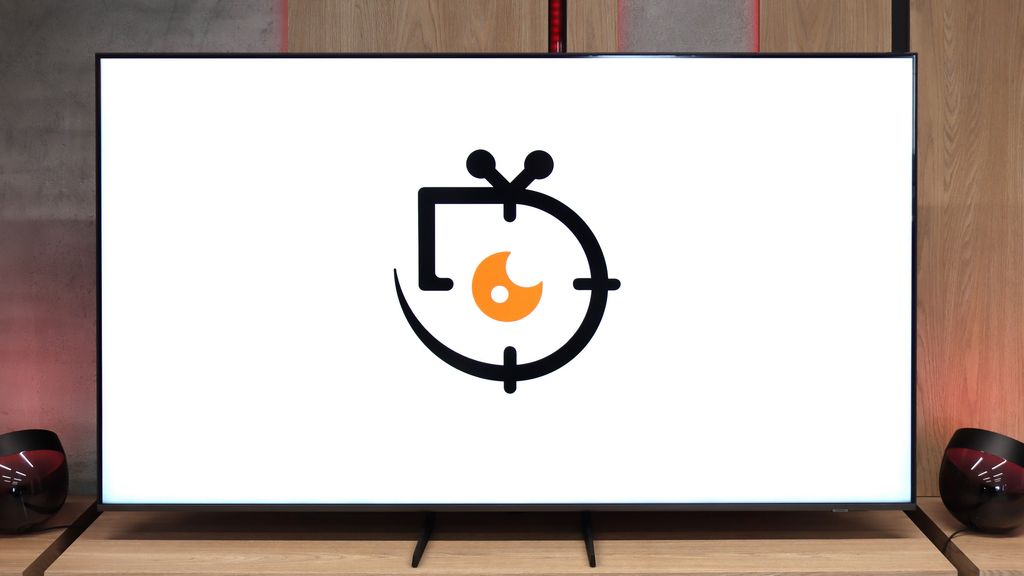
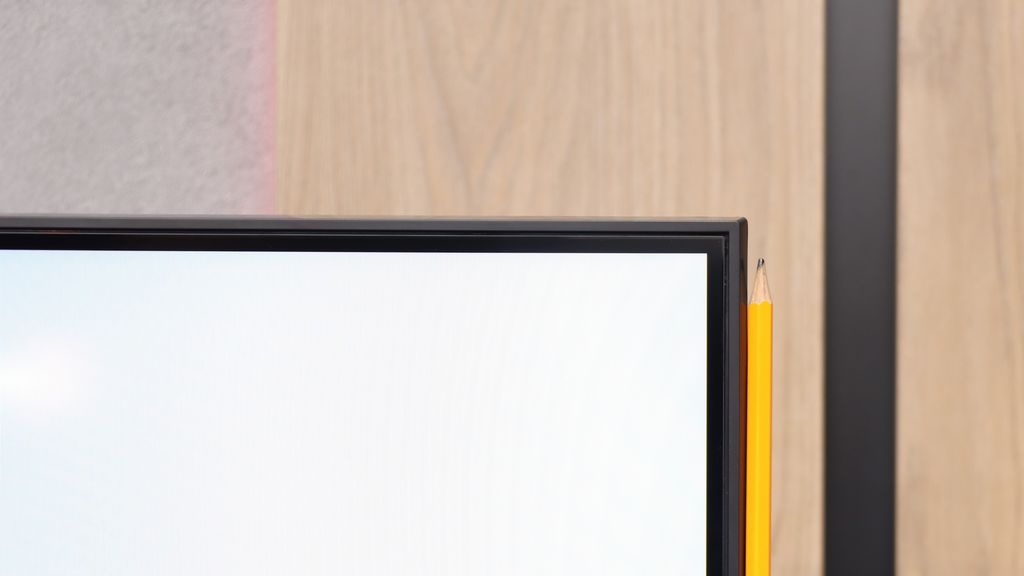
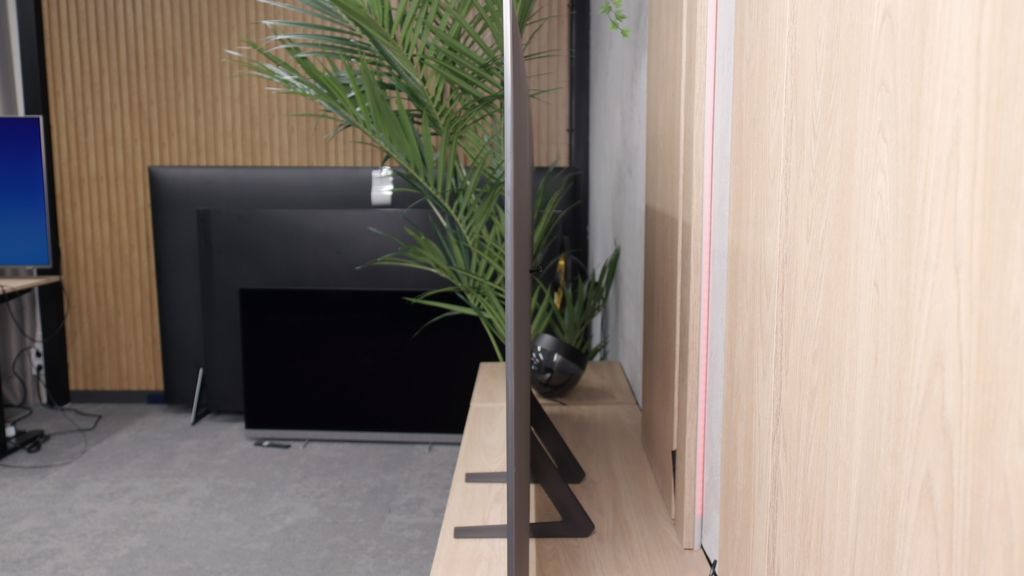
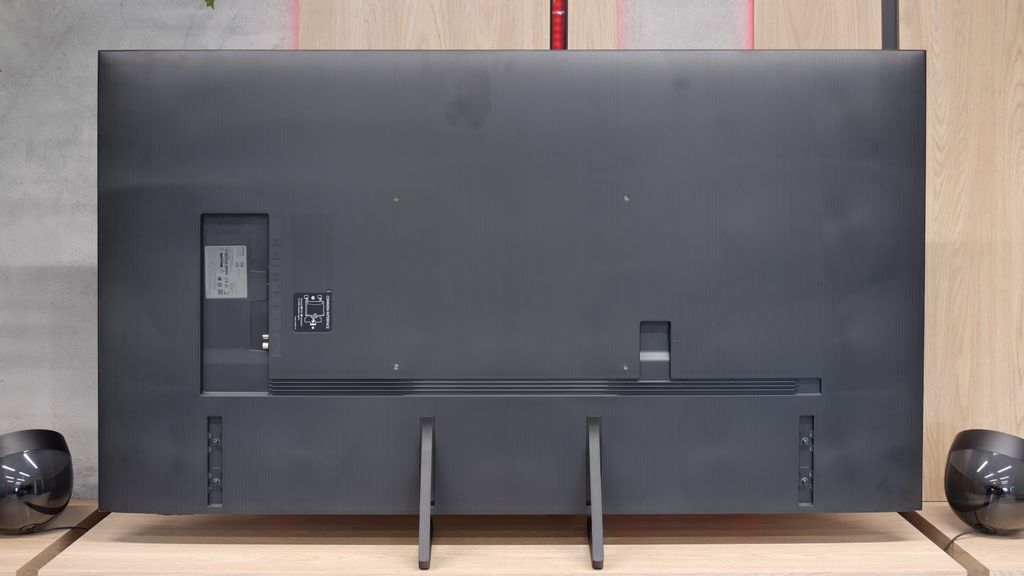
Contrast and black detail
4.3/10
5.5/10
Local dimming function: No
Local dimming function: No
Contrast:

Result
2,350:1

Result
2,400:1

Result
2,600:1

Result
2,550:1

Result
2,200:1

Result
5,200:1

Result
4,650:1

Result
3,650:1

Result
4,100:1

Result
4,150:1
Halo effect and black detail visibility:

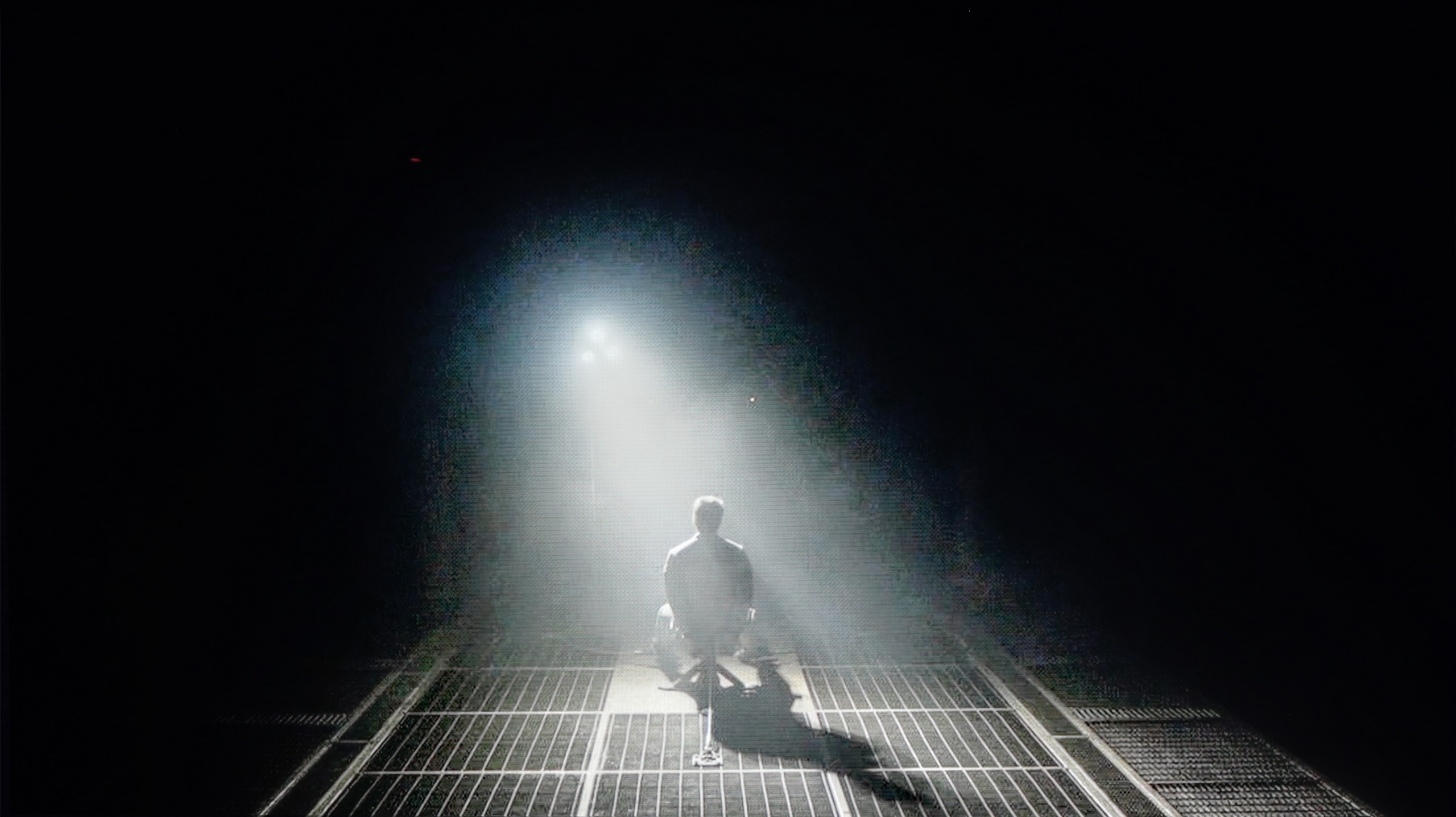
The television Philips PUS8959 is based on an ADS panel, which offers slightly different parameters compared to the popular VA panels. In the tested scenes, the contrast was around 2000:1, making the black level far from ideal. ADS panels are known for their weaker contrast compared to VA panels, which in practice means that instead of deep black, we see more navy or gray shades. However, the ADS panel is still better than the standard IPS panel, which cannot achieve such a level of contrast. Additionally, the Philips PUS8959 is not equipped with local dimming technology that could improve these parameters. The lack of this feature amplifies the effect of shallow black, particularly noticeable in dark scenes, like those in the movie "Sicario 2." Instead of intense black, the screen generates a silvery glow, which can be bothersome, especially when watching in darker conditions. All of this makes the visual experience lose depth, and details in dark scenes are not as well visible as one might expect from higher-class screens. Despite the lack of local dimming, the television is equipped with something called Global Dimming. The television is capable of completely dimming the panel to achieve higher contrast, but at the expense of details that may blend together, for example, lights in the test scene from the movie Oblivion. It is worth adding that the model we received for testing has quite large spots resulting from uneven backlighting, although this is not an exception, and one should take into account that we might also receive such a unit when purchasing.
Samsung Q8F uses an LCD VA panel, which immediately puts it in a good position in terms of contrast. By nature, such panels offer deeper blacks than IPS panels, and you can really see this effect here. On test patterns, the contrast maintained a range of about 4000:1 to even 6000:1, which in practice results in a surprisingly engaging picture, especially in a slightly dimmed living room. Of course, this is not the level of LCD screens with local dimming, let alone OLEDs — sometimes the black can shift to a shade of navy blue, and the overall image seems flattened. However, Samsung employs a simple trick: the so-called global dimming, which means dimming the entire screen when a lot of dark areas appear on it. The effect can be impressive but comes at the cost of losing some detail, which may not appeal to everyone. Despite this, the Q8F still presents itself significantly better than televisions with IPS panels, offering solid contrast and blacks that can draw you into the cinematic atmosphere.
HDR effect quality
5.9/10
5.2/10
Luminance measurements in HDR:

Result
501 nit

Result
514 nit

Result
553 nit

Result
544 nit

Result
569 nit

Result
473 nit

Result
417 nit

Result
457 nit

Result
210 nit

Result
471 nit
Scene from the movie “Pan” (about 2800 nits)

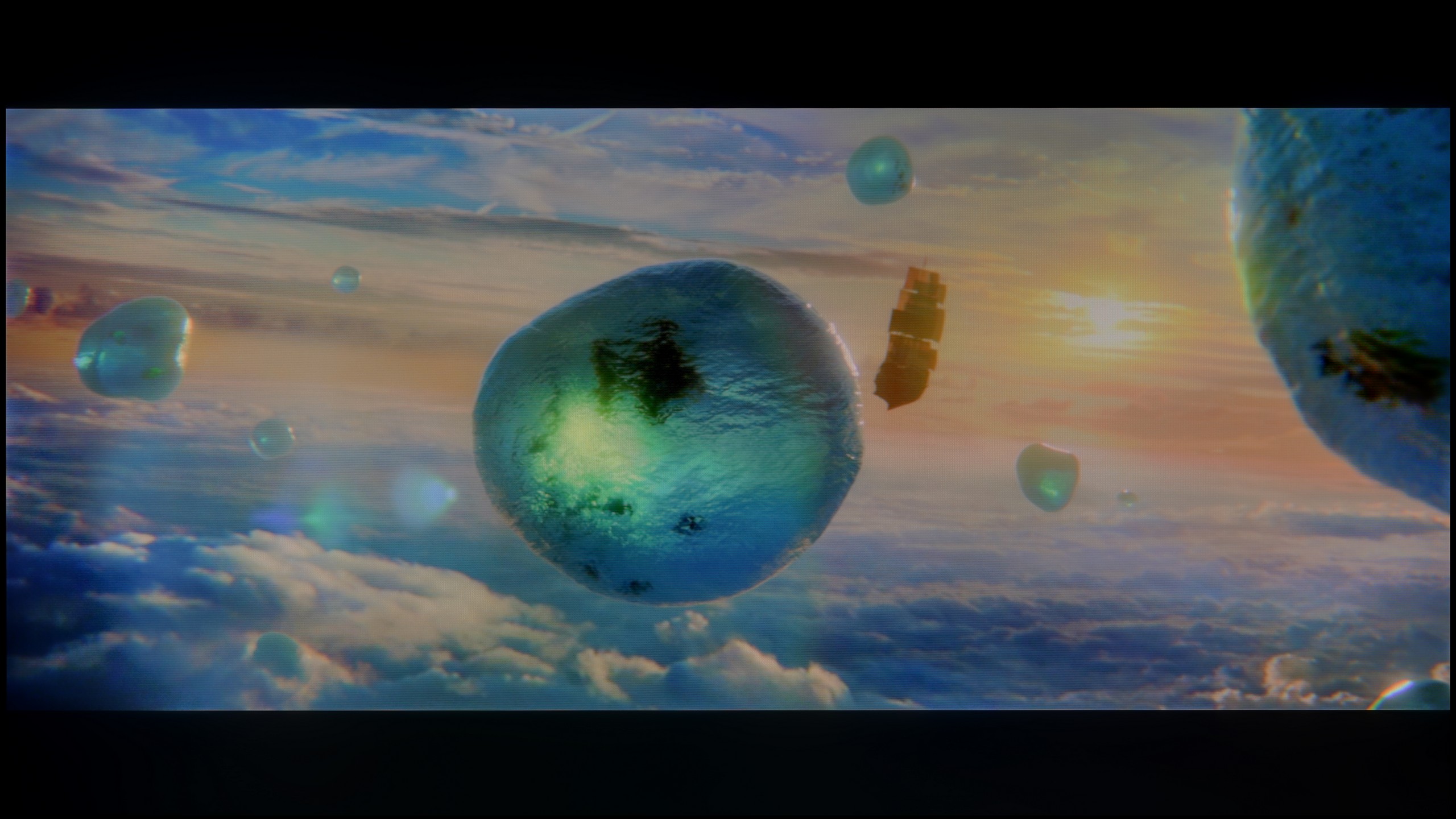
Scene from the movie “Billy Lynn” (about 1100 nits)


Static HDR10


Dynamic: Dolby Vision
Dynamic: HDR10+


HDR luminance chart:
Samsung Q8F
HDR luminance
Philips The One (PUS8959 / PUS8919 / PUS8909 / PUS8949
HDR luminance
The luminance chart for Philips PUS8959 shows that the television can achieve around 550 nits of brightness, which can be considered a satisfactory level. This brightness allows the effects of HDR to be felt, particularly standing out in more demanding scenes. In the tested patterns, the television performed quite well, even in challenging sequences like those from "Sicario 2". Due to the lack of local dimming, the television does not dim small bright elements, and they shine with the full "power" of the television but at the cost of the silverish blacks we mentioned in the paragraph about blacks. It is also worth praising Philips PUS8959 for its good coverage of the DCI-P3 color palette, which amounts to around 94.5%. This makes the colors vivid and close to the creators' intentions, further enhancing the quality of HDR effects and the viewing experience of high dynamic range content.
In terms of brightness, the Samsung Q8F performs surprisingly well for a television without local dimming. It measures up to 500 nits, which practically means that most movie and series scenes look pleasant, and it definitely cannot be accused of lacking the "HDR effect." In films like Life of Pi or The Meg, the screen was able to glow and deliver light effects at a satisfying level. It struggles more during challenging moments—with dark frames containing single bright points. The global dimming used causes the television to darken the image to maintain deep blacks, but at the cost of detail brightness. This is clearly visible in the scene from Sicario 2, where the helicopter lights dropped to around 200 nits. This is a conscious design decision that gives the impression of deeper blacks but somewhat takes away from the brilliance of individual elements, and this should simply be kept in mind. When it comes to color reproduction, the Q8F utilizes quantum dot technology, which broadens the color range. A DCI-P3 coverage of 91% can be considered a decent result, although it is not a record-breaking achievement compared to other QLEDs.
Factory color reproduction
4.1/10
4.6/10


Factory Mode
After calibration
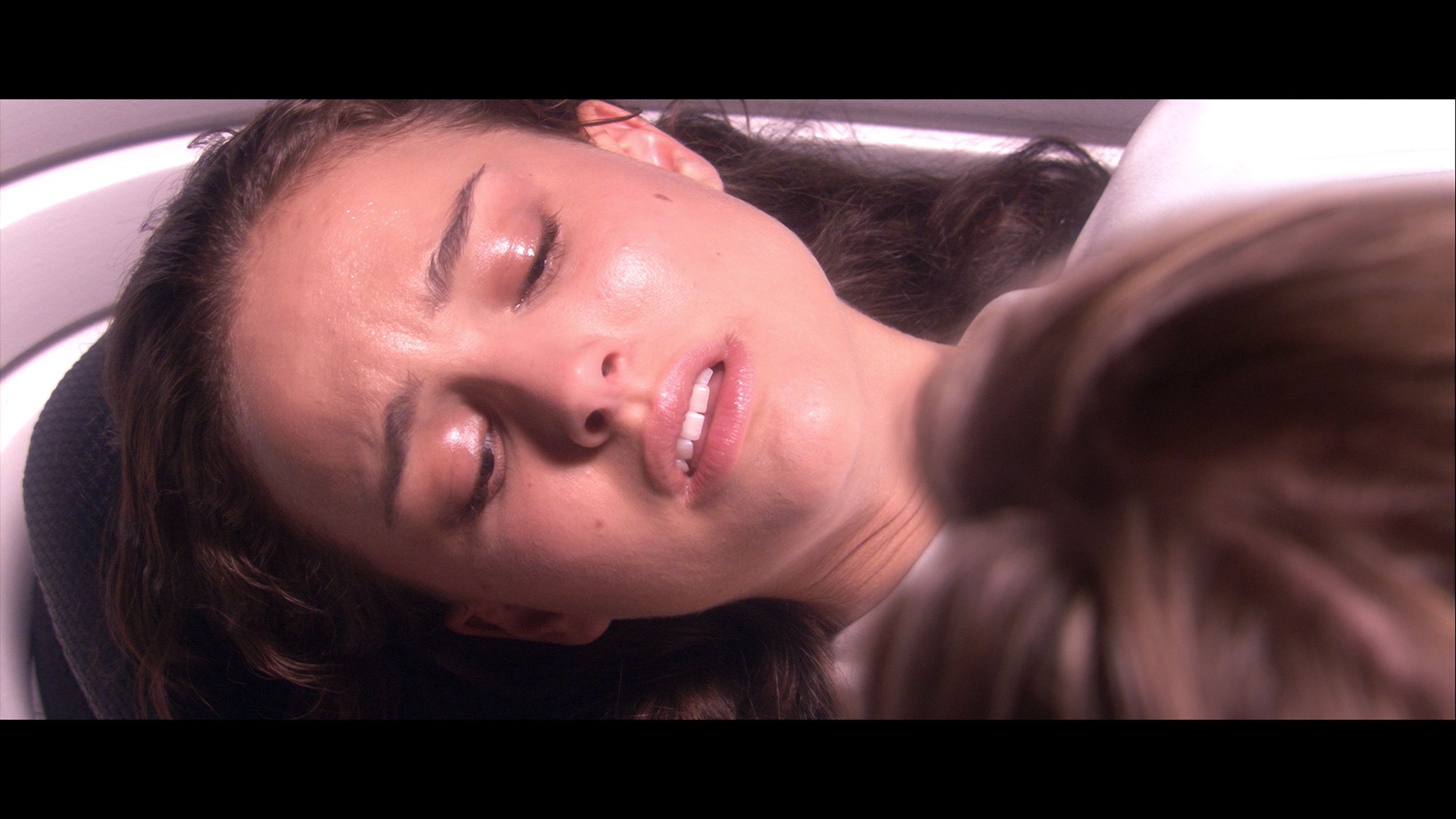
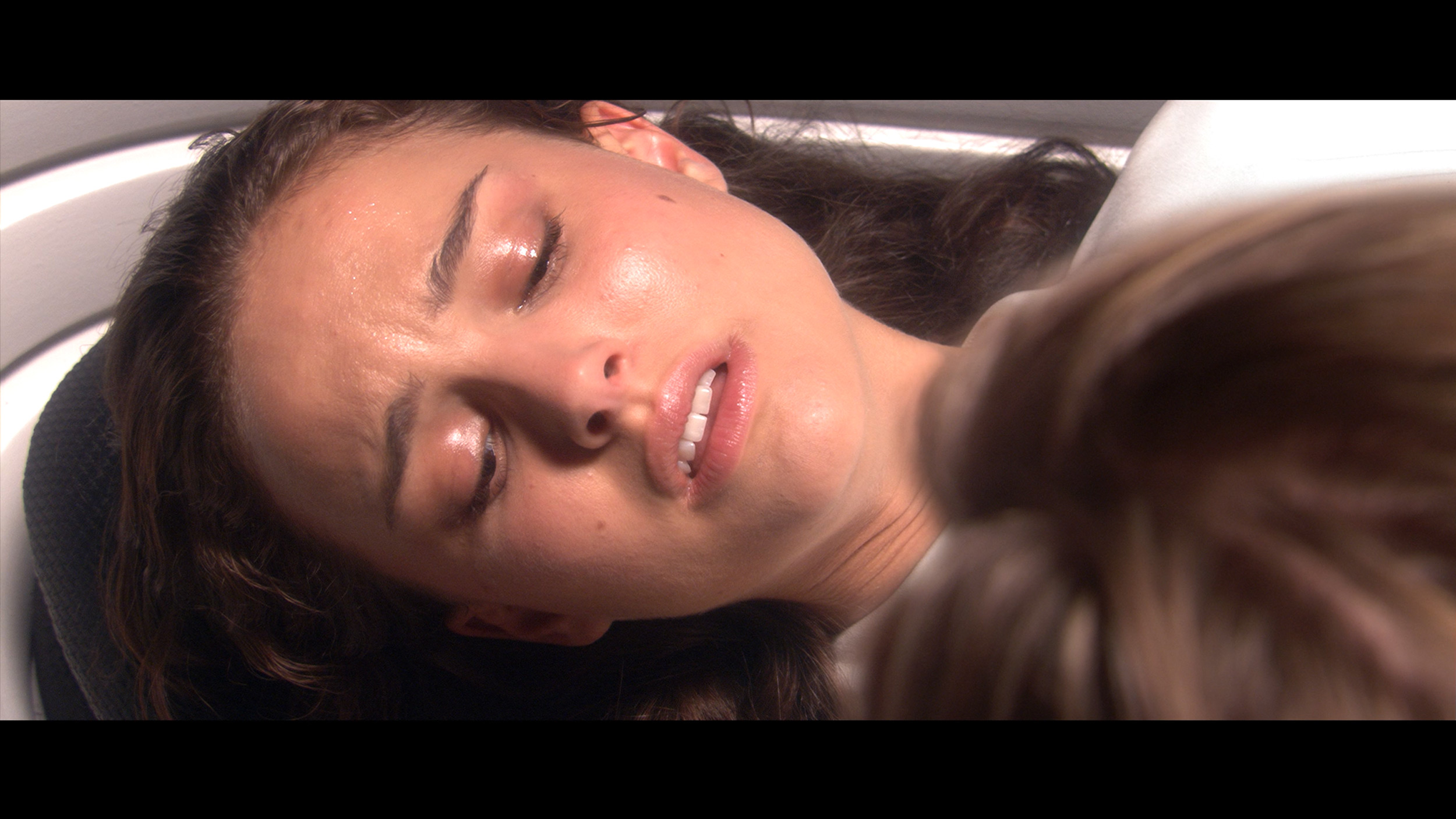
Factory Mode
After calibration
The Philips PUS8959 television was tested in the best, theoretically most precise picture mode – Filmmaker. Although the name suggests cinematic quality, it unfortunately falls far short of the ideal. The biggest issue in this mode is white balance, both in HD and 4K content. It is characterized by a significant dominance of the red color and dips in the green level, resulting in an unnatural color reproduction. For example, white elements of the image have a distinctly pinkish hue, and the green is less intense, causing the overall image to lose its naturalness and color balance. The ColorChecker test confirms these errors – it is clearly visible how the color samples "deviate" from the correct values, which can be best observed on the sample squares that should accurately reproduce colors. The lack of accuracy in this regard affects the realism and fidelity of the image, which is particularly undesirable in Filmmaker mode.
Regarding brightness characteristics, the gamma chart resembles a real roller coaster – with small elements displayed on the screen, the brightness is excessive, causing details to become overly highlighted. Meanwhile, at higher gamma values, the image loses contrast and becomes too dark, making the overall appearance look less dynamic. Similar issues can be noticed in the EOTF characteristics – the television is unable to correctly reproduce the brightness level, negatively affecting the overall image quality.
We decided to check the Filmmaker mode because it provided us with the best picture right out of the box. However, this does not mean it was perfect. The white balance had too much blue and red tint, causing the white to take on a slight purple-pink hue. Such an imbalance affected the visibility of practically all colors, as can be seen in the comparison photo below. The brightness characteristic in SDR content was quite well adjusted, although in HDR materials, we noticed that the television did not always manage its global dimming—at times, the screen was too dim, while at other times it suddenly brightened. Fortunately, issues related to colors can be effectively corrected with calibration tools, so we decided to get to work.
Color reproduction after calibration
8.1/10
7.8/10

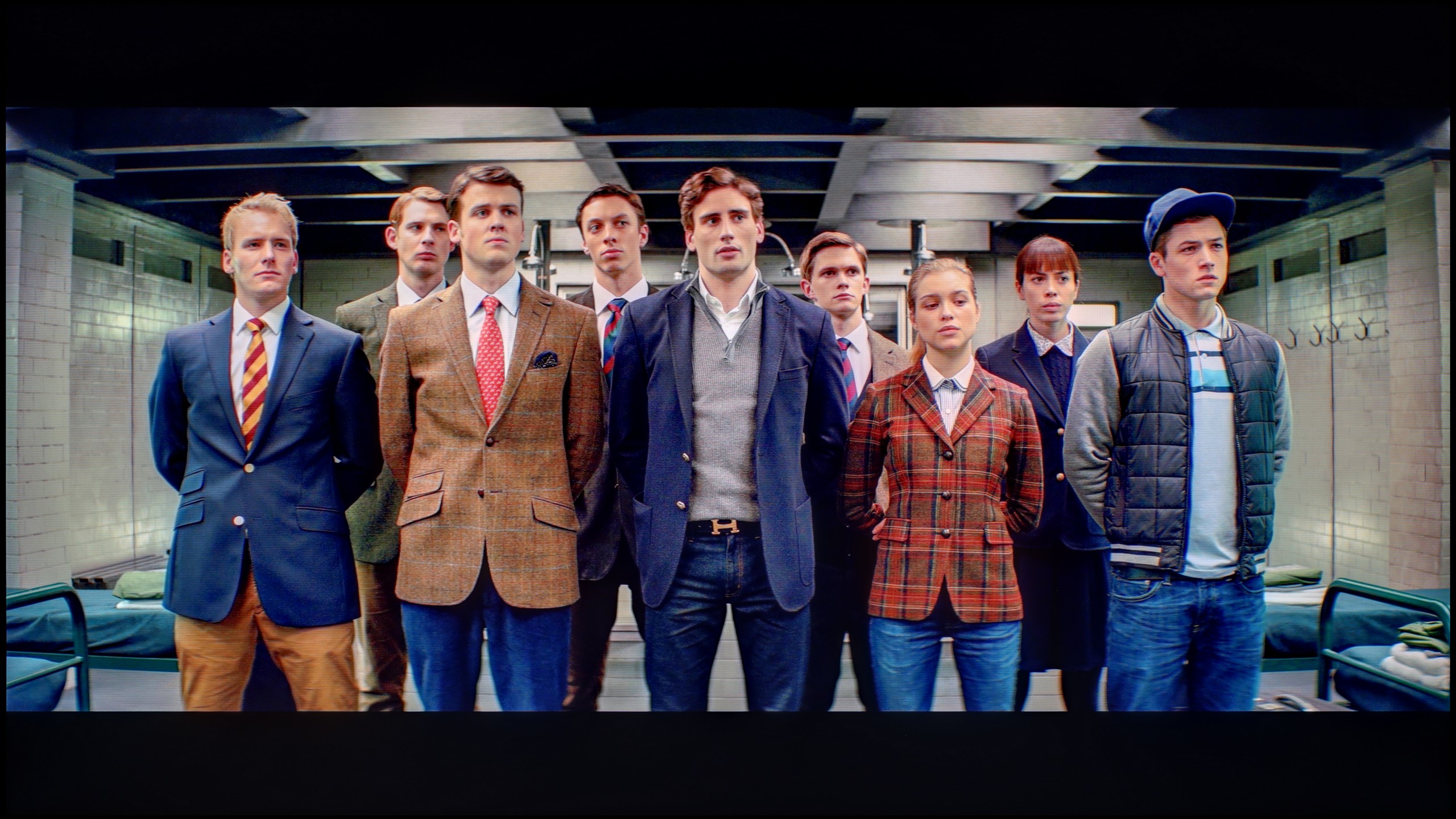


After calibration, the Philips PUS8959 television shows a significant improvement in color reproduction, especially in HD content. The white balance is exceptionally even, and the Delta E error values are below 1, which can be considered an outstanding result. Additionally, the gamma, which is responsible for brightness in lower-quality materials, performs very well, maintaining a stable level at 2.4, leading to an appropriate balance between bright and dark areas of the image.
Regarding 4K HDR materials, a significant improvement is also noticeable. The white balance, although not as perfect as in HD content, no longer shows issues with excessive red exposure, making the image appear more natural and harmonious. Unfortunately, in the EOTF characteristics, it is difficult to speak of any significant improvement, due to the design limitations of the television that prevent significant enhancement in this aspect.
Nevertheless, the overall performance is much better after calibration, making the Philips PUS8959 one of those televisions where it is truly worth spending time on precise calibration to achieve satisfactory image quality.
After calibration, we managed to correct the white balance almost to perfection. Older SDR content looks stunning — most errors are within a threshold of 2, which is definitely below the human eye's perception limit. In HDR, we also brought the white balance to the correct level, but a different problem arises here. So why are there still relatively large errors in color reproduction? This is mainly due to the limited color palette and the way the television manages brightness. The applied global dimming technique does not give the user control in the settings, so when analyzing the EOTF curve in HDR films, it is clear that the Q8F can independently modify luminance. This can be considered a certain limitation, but despite this, the image after calibration is still much more enjoyable than in the factory version.
Smoothness of tonal transitions
8.9/10
9/10





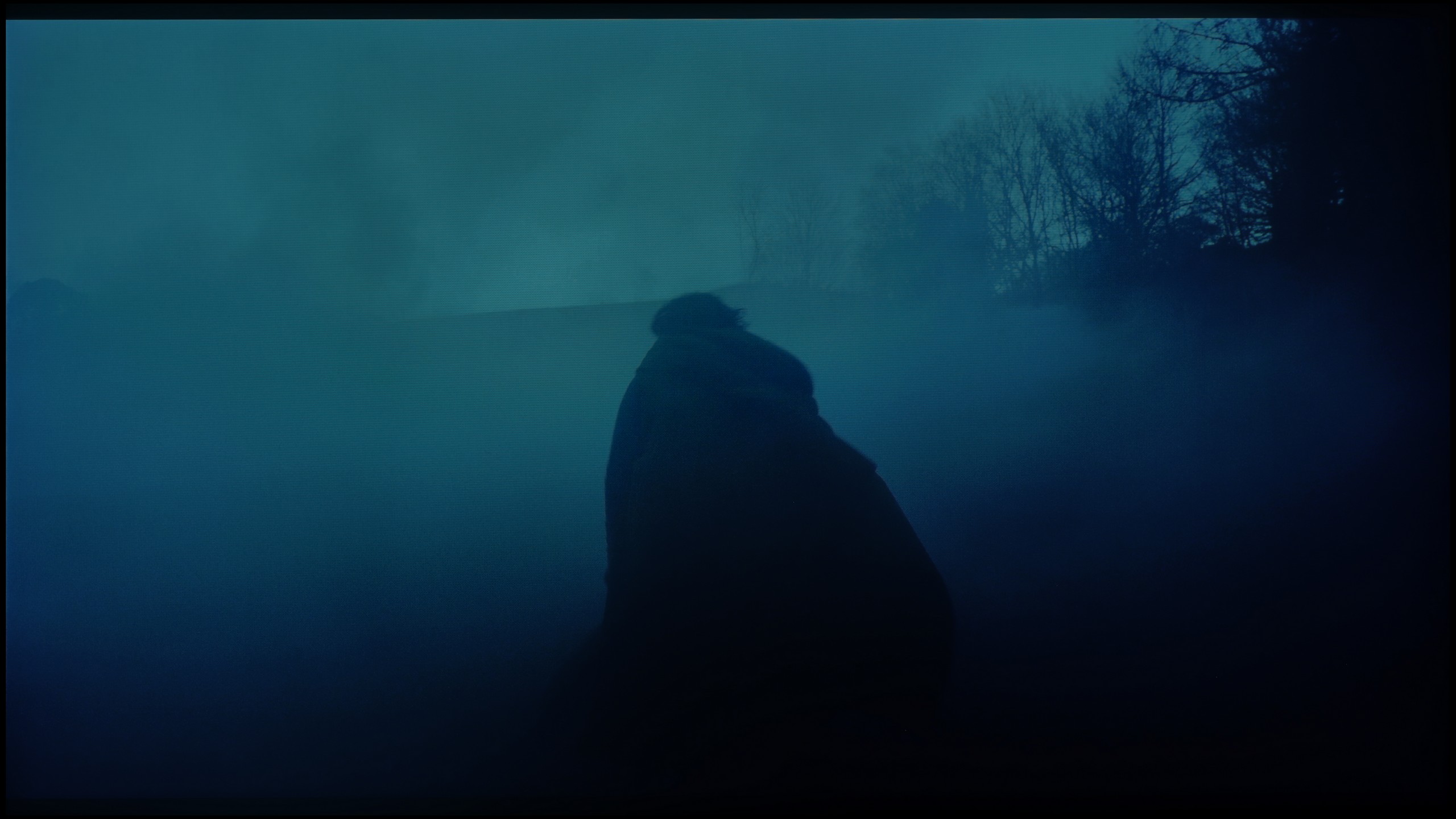

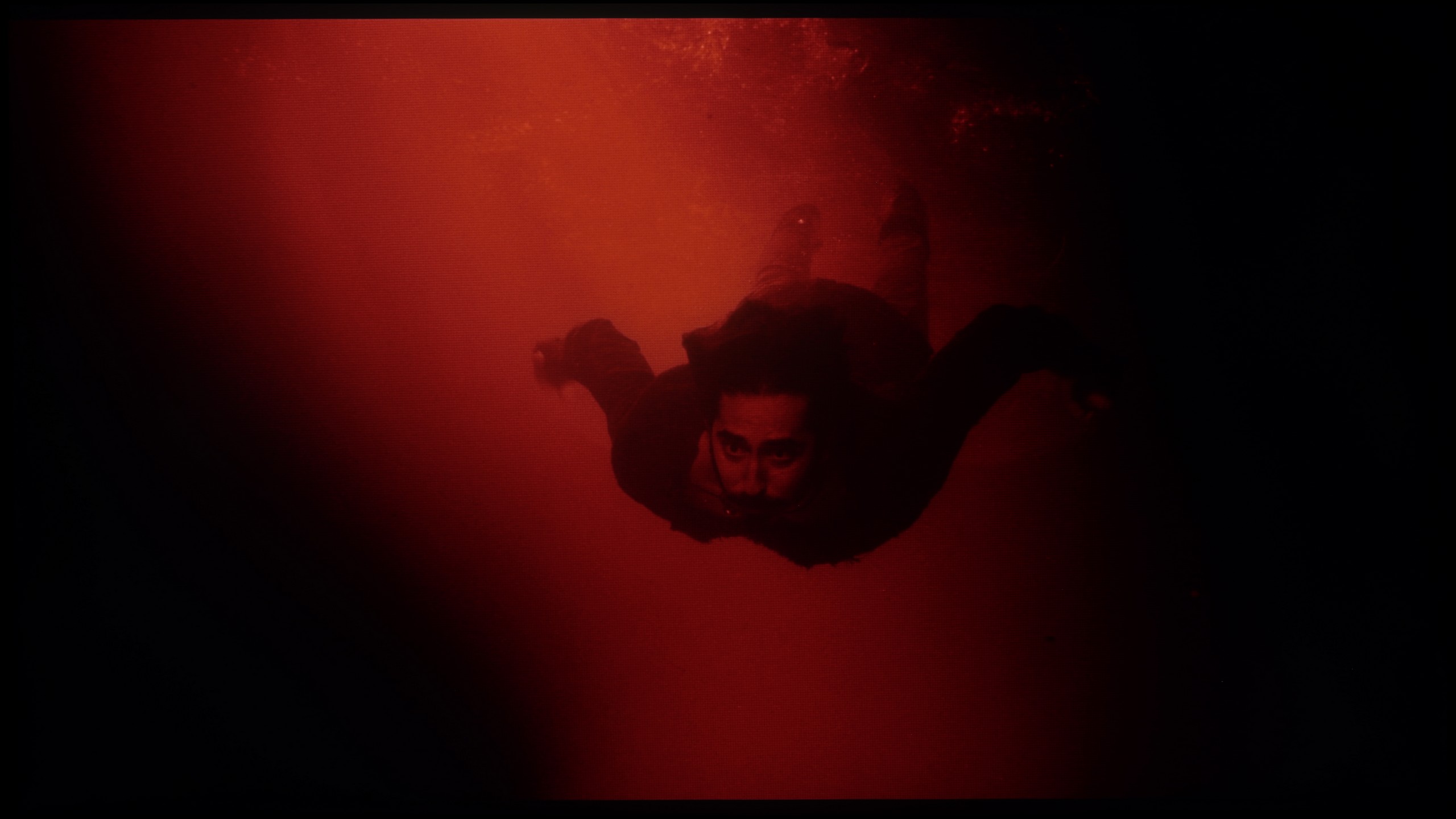




The gradation on the Philips PUS8959 television looks very good, offering smooth tonal transitions in most scenes. Occasionally, minor issues can be noticed, especially during transitions between certain colors, where subtle unevenness is apparent. However, these imperfections are subtle enough that they do not significantly impact the overall viewing experience and can be considered completely acceptable. In everyday use, the television provides sufficiently good gradation quality to satisfy even more demanding users, maintaining the naturalness of the image and avoiding glaring tonal distortions.
The fluidity of tonal transitions in the Q8F is really very good. The TV blends colors very nicely, both in bright segments of the sky and in darker shots, where "steps" in color can easily be visible. Yes, there are occasional errors, but you have to look closely to catch them. In practice, while watching movies or series, the picture looks cohesive and is not distracting with any artifacts. Therefore, the rating in this category had to be high. 😉
Image scaling and smoothness of tonal transitions
6.5/10
5/10
Smooth transition function

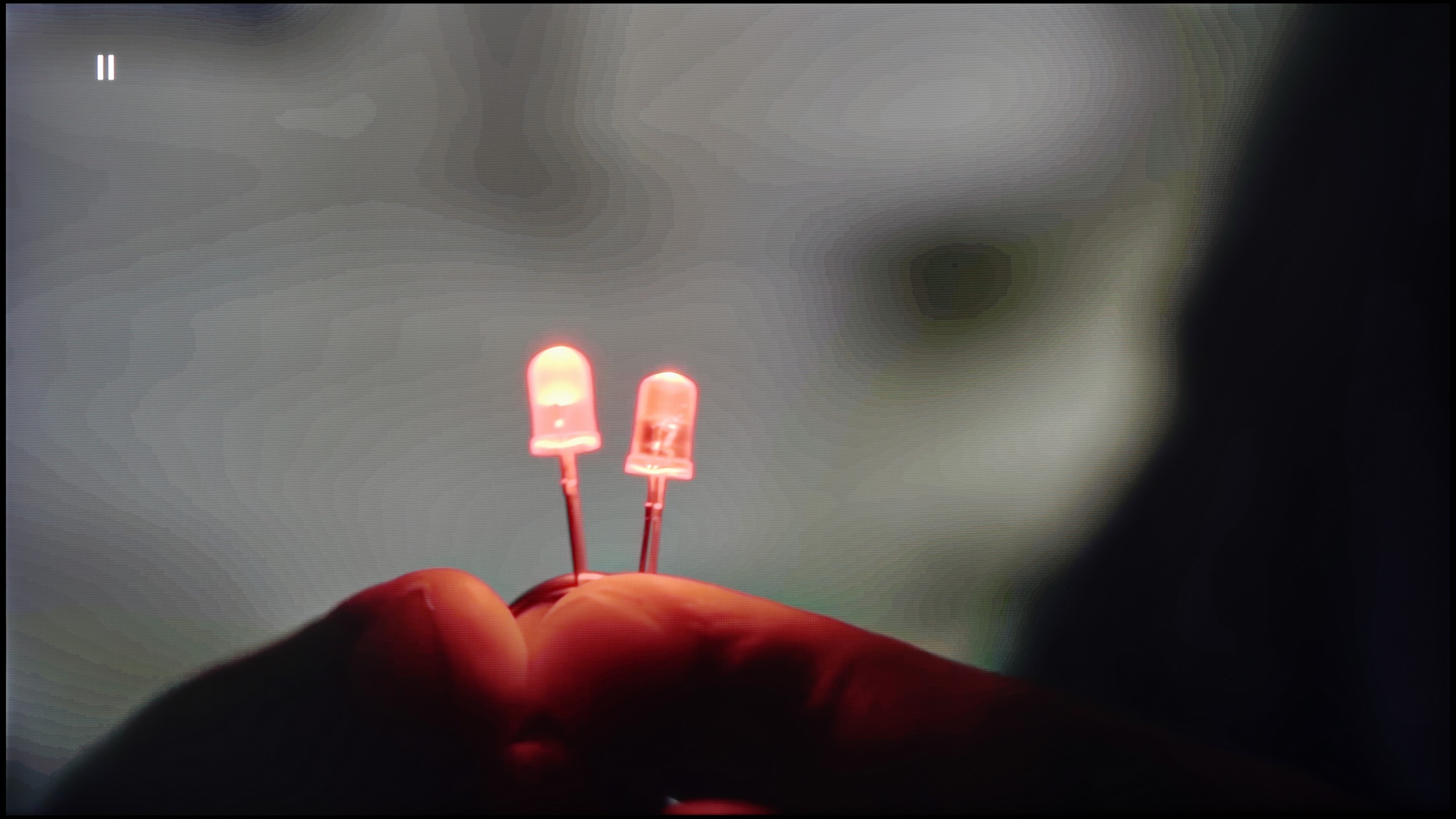
Image without overscan on the SD signal


When it comes to smoothing tonal transitions, the "Distortion Reduction" function at the minimal setting performs quite well, effectively smoothing tonal transitions without excessive influence on other elements of the image. In tests, I did not notice that the reduction negatively affected the image structure, such as film grain or object details – everything remains in place, which is a big plus for users who appreciate the natural look of film materials.
On the other hand, regarding digital processing, the image looks quite good, although it is characterized by very softened contours, giving it an almost "misty" quality. This effect can evoke mixed feelings – some users may enjoy the fluidity and delicacy of this type of presentation, while others may find it too gentle, losing detail. It is a matter of individual preferences, but it must be admitted that the Philips PUS8959 provides quite subtle yet effective tools for improving tonal transitions without excessive interference in the natural character of the image.
Let's see how the Q8F handles older content, which often has poor quality. Let's start with the positives: the upscaling, which means raising the image to a higher resolution, works really well. The TV handles both classic television and materials from YouTube without giving the impression that we are dealing with something completely unattractive. Materials in very low resolutions, such as 576p, perform worse — the image can be cropped, and unfortunately, the overscan phenomenon cannot be turned off. However, the digital processing itself looks worse too. The noise reduction function, instead of removing unwanted interference, smooths out almost everything: film grain (which is desirable for many viewers) disappears along with the texture of the image, and the faces of the actors begin to resemble characters from cheap Turkish soap operas. It is therefore hard to consider this option useful — it's best to leave it completely turned off. Perhaps Samsung will refine the operation of this feature in updates, but for now, it’s difficult to regard it as anything other than an unnecessary addition.
Blur and motion smoothness
8/10
4.5/10

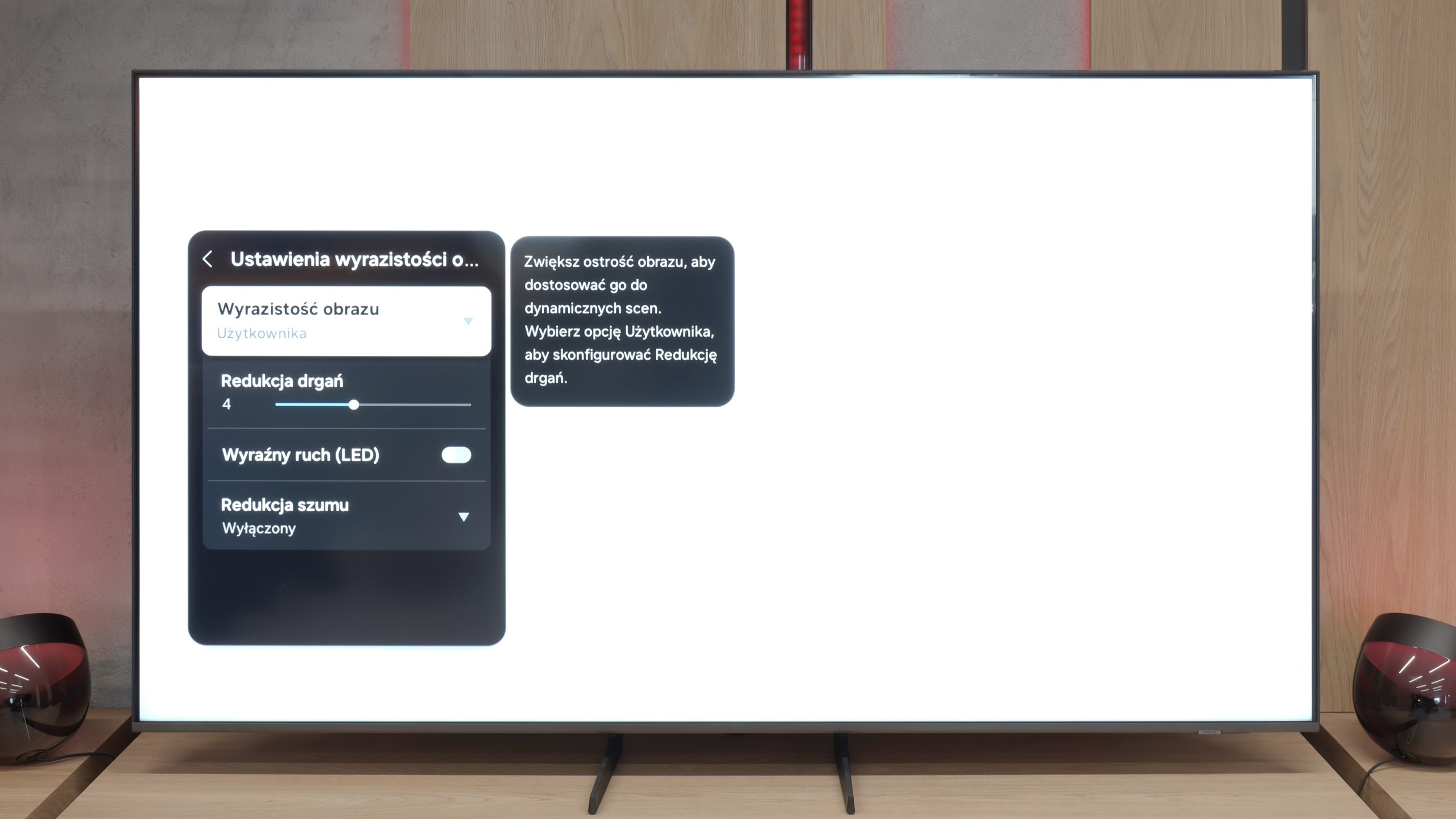
Blur (native resolution, maximum refresh rate):



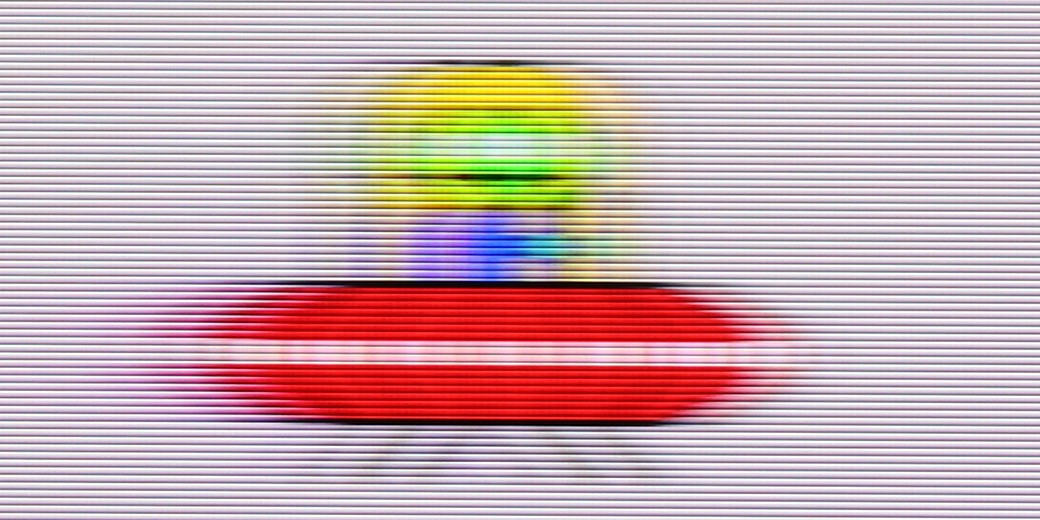
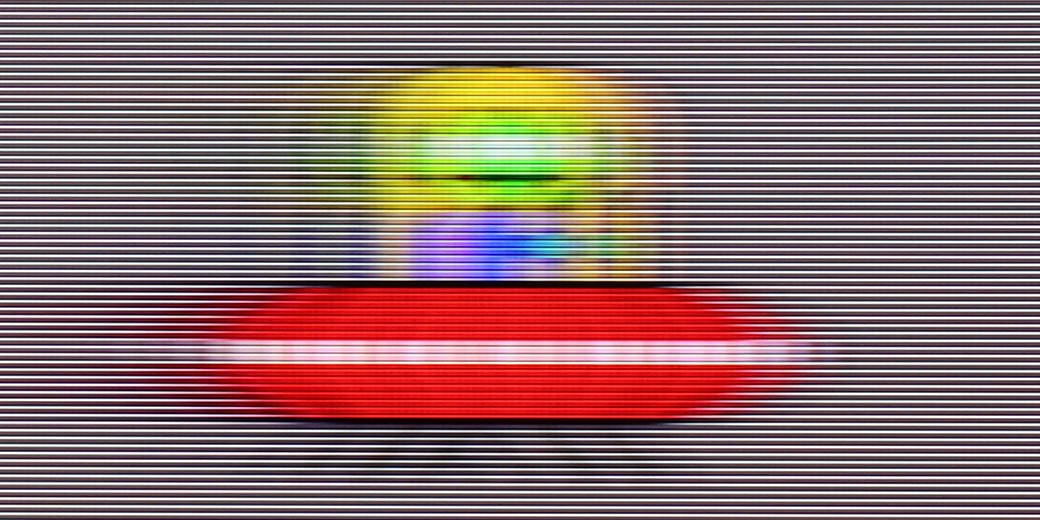
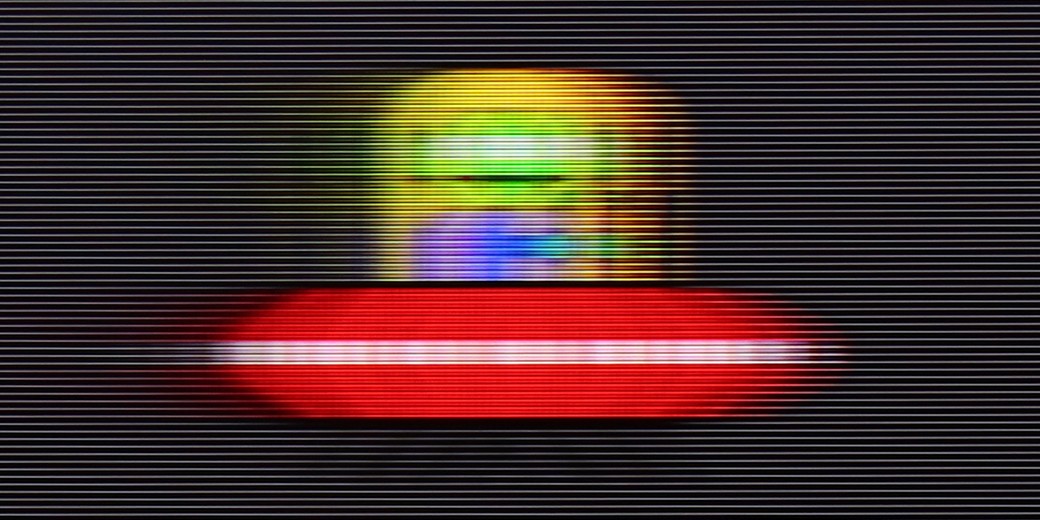
Blur (BFI function enabled):



Philips TV PUS8959 is equipped with a 120 Hz panel, which should satisfy more demanding users, especially those who love watching dynamic sports broadcasts or playing games. Such a high refresh rate allows for a significantly smoother image, being a key aspect during dynamic scenes and fast actions.
For those who prefer watching movies, the TV offers an additional motion smoother that allows adjusting the frame rate of the film according to personal preferences. The Philips PUS8959 has a 10-step adjustment for the functions called "Smoothness" and "Motion Blur Reduction." The "Smoothness" function is responsible for increasing the number of frames through interpolation, making motion on the screen smoother, resembling the effect of so-called "soap opera." Meanwhile, "Motion Blur Reduction" focuses on minimizing blurring and improving motion sharpness, which is particularly noticeable in dynamic sequences, such as action scenes or fast sports shots.
Due to the 60 Hz panel, it's hard to call the Q8F a television made for gaming or watching sports. The panel isn't particularly fast, making motion blur clearly visible. If you were counting on spectacular, almost "stadium-like" experiences during broadcasts, you might feel a slight disappointment. Fortunately, in the case of movies and series, Samsung has not abandoned motion smoothing features. This is nothing other than a motion smoother that allows improving the fluidity of productions recorded at 24 or 30 frames per second. Thanks to this, one can decide whether they prefer a smoother, "television" image or to maintain a cinematic quality. It all depends on the viewer's preferences, and the ability to adjust this parameter is undoubtedly a plus.
Console compatibility and gaming features
9.8/10
3.7/10
- ALLM
- VRR
- VRR range48 - 144Hz
- Dolby Vision Game Mode
- Correct implementation of HGIG
- 1080p@120Hz
- 1440p@120Hz
- 4K@120Hz
- Game bar

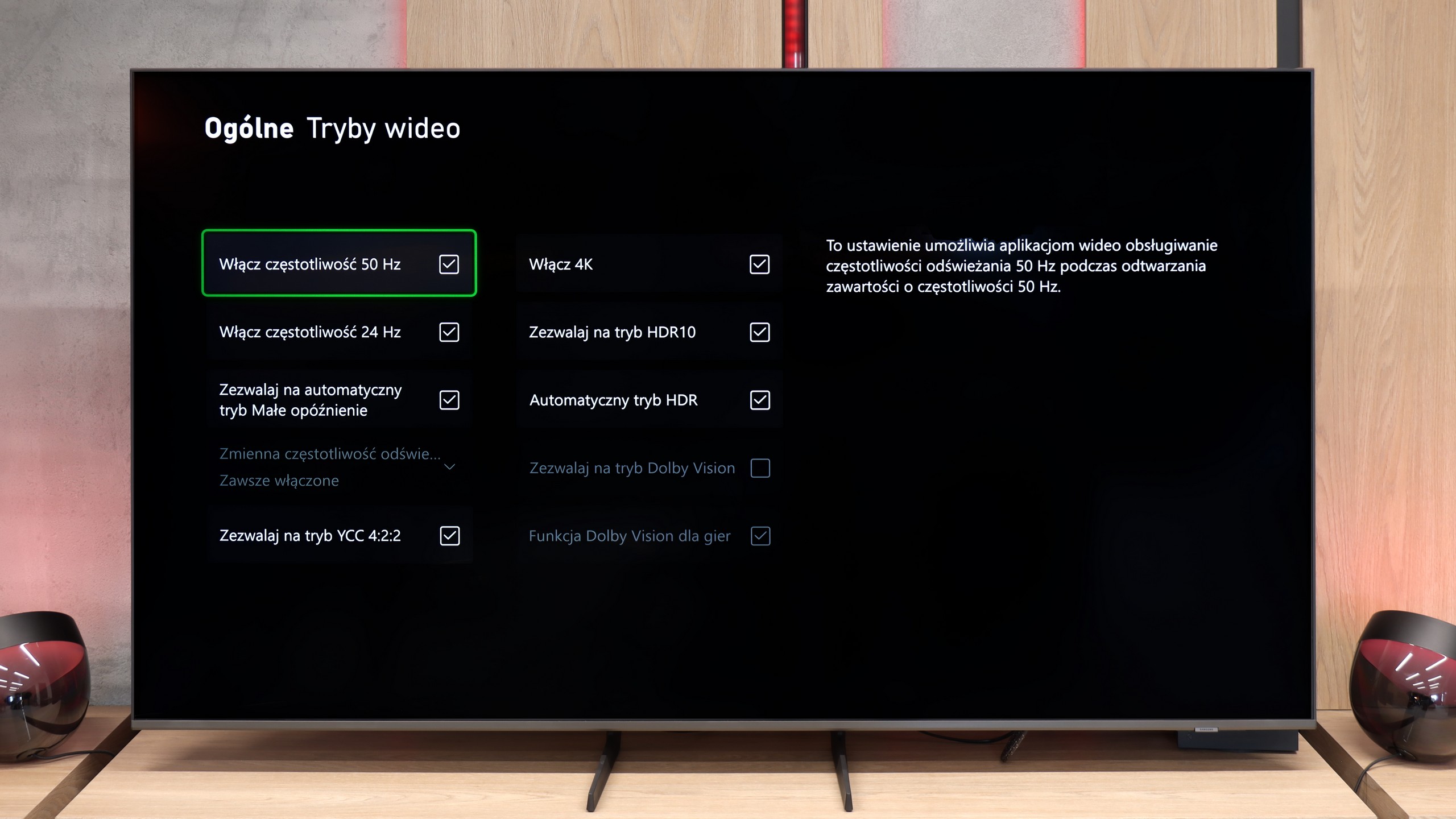

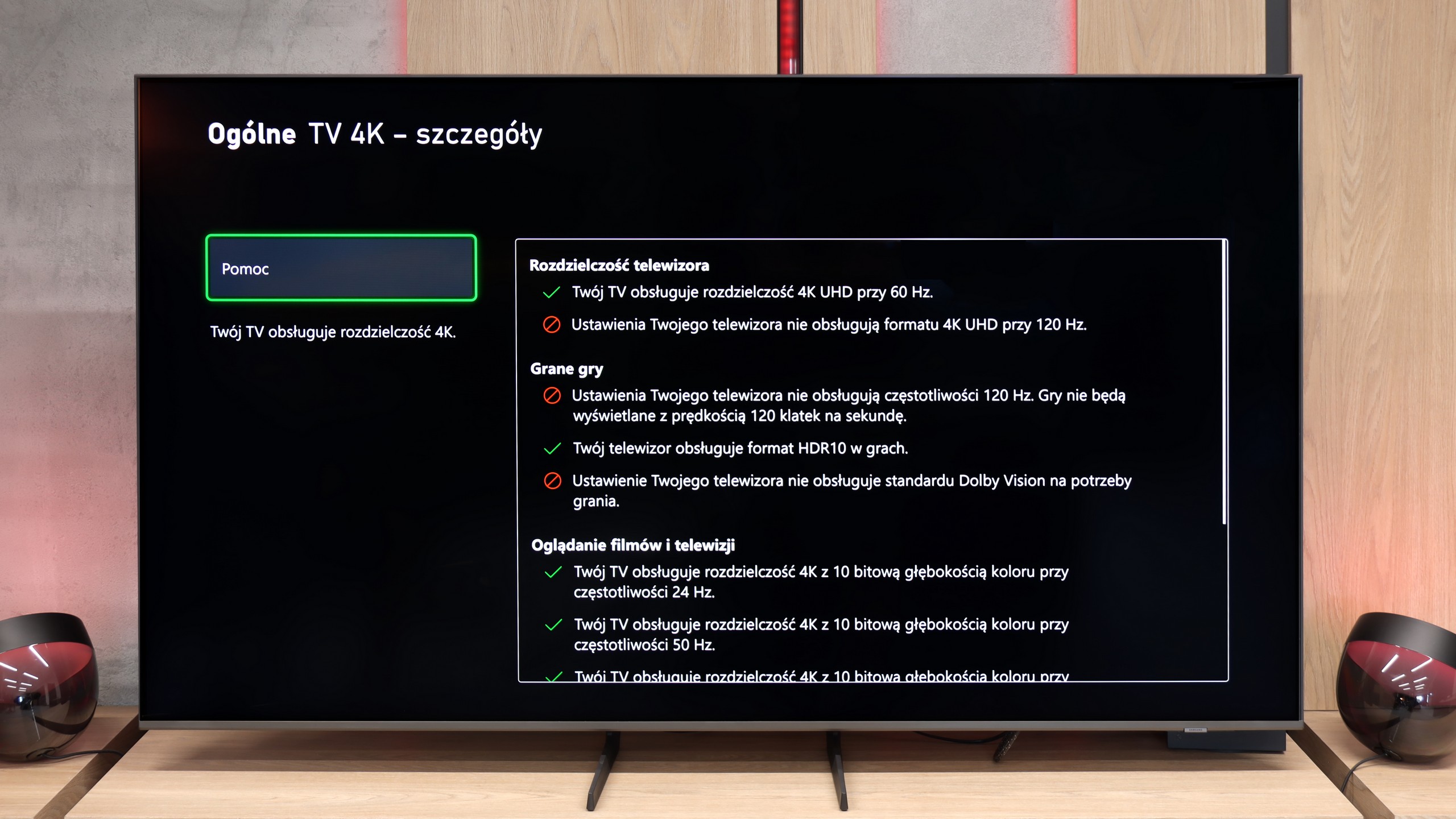

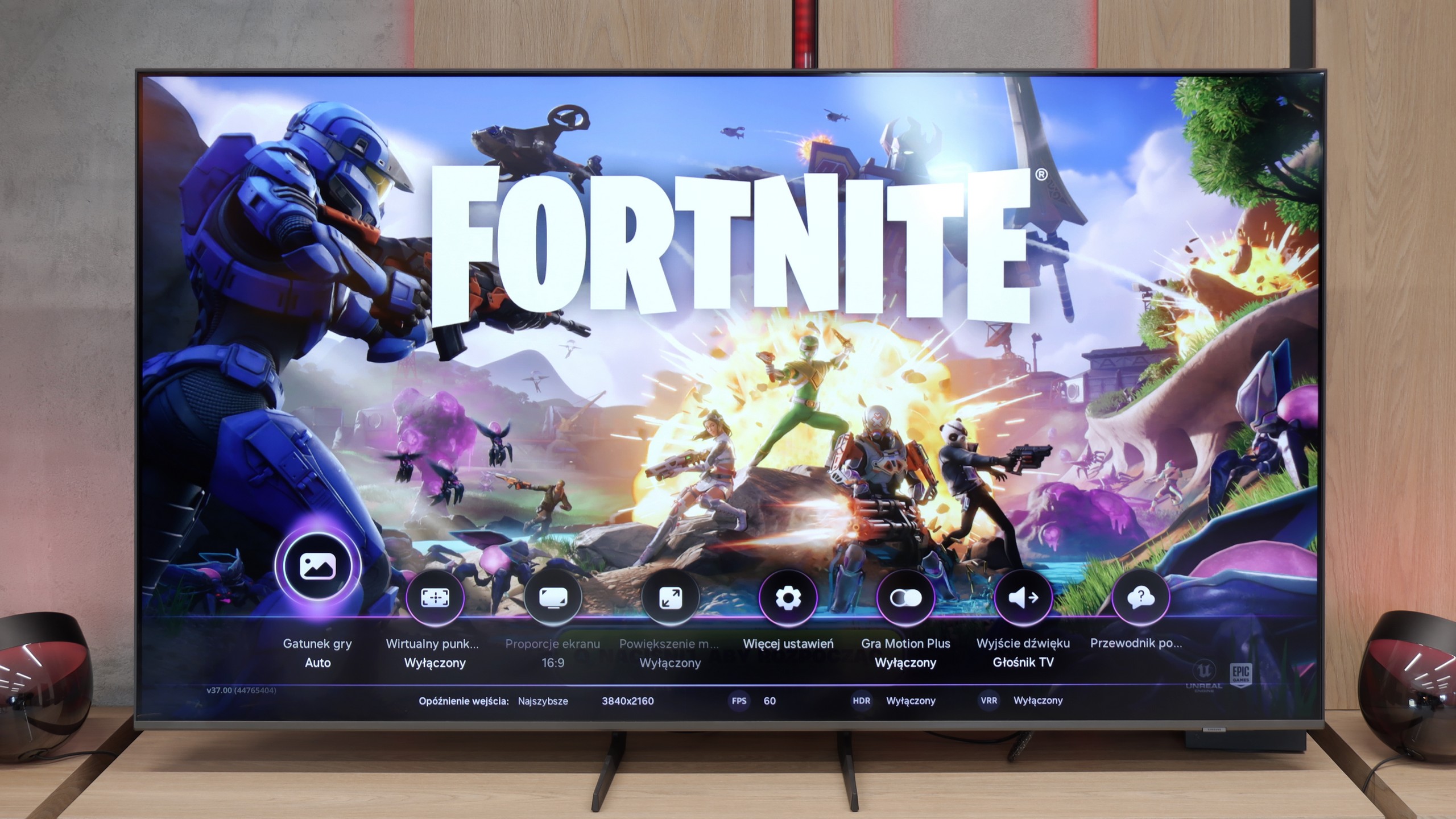

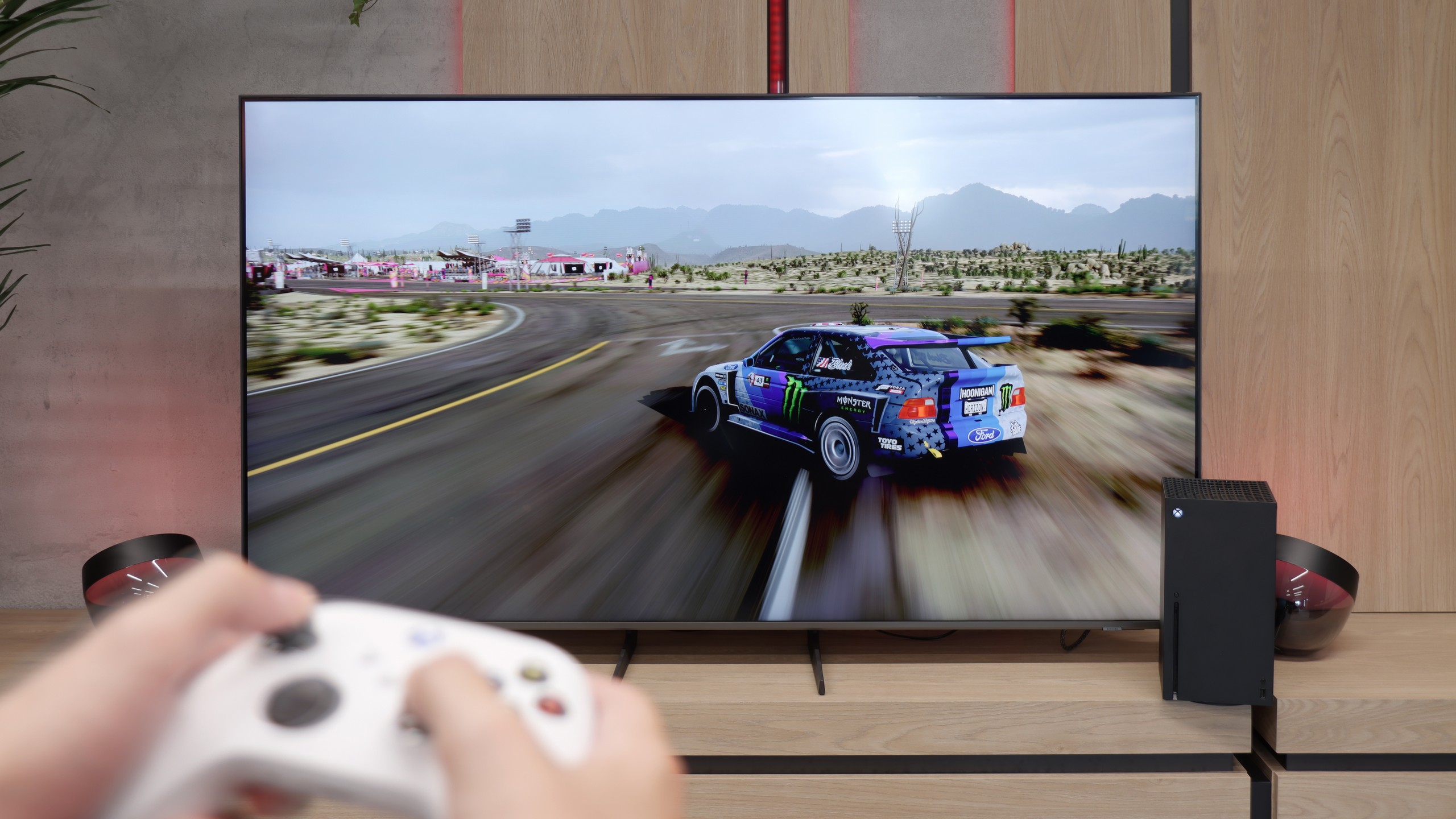
Philips PUS8959 is a television that will certainly satisfy gaming enthusiasts. It supports most modern technologies useful during gameplay, such as HGiG, allowing for better HDR effect reproduction in games. As a result, the image is closer to what the game developers intended to achieve.
The television also supports 120 Hz image display, ensuring smoothness and dynamism, which is particularly important during action games and sports broadcasts. The Game Bar feature provides quick access to game settings, making it easier to adjust the image according to user preferences without interrupting gameplay.
Unfortunately, the Dolby Vision mode does not offer low input lag, which may be noticeable during dynamic scenes. Nevertheless, thanks to the HGiG feature and high refresh rate, the Philips PUS8959 remains an attractive choice for gamers, offering good image quality and appropriate smoothness during gameplay.
It is not entirely clear what Samsung has mixed up this year with its televisions, but the Q8F is not free from all the confusion with updates and shortcomings. While its older cousin, the Q67D, could still be recommended to casual gamers with a clear conscience, it's hard to find a reason to do so here. Aside from the automatic game mode and the attractively designed Game Bar, we practically get nothing that could attract gamers. The lack of proper HGiG implementation is a big problem, especially since function simply disappeared after the 1126 update. The issue with VRR is even worse. Although it is featured in the manufacturer's brochures and appears in the Game Bar, we couldn't activate it. The Xbox Series X console did not allow it to be activated at all, and the option remained grayed out and inactive. It's hard to praise such a television even to casual gamers, which is a shame because Samsung has had a strong bargaining chip in the gaming segment for years.
Input lag
9.7/10
9.9/10
SDR
HDR
Dolby Vision
Philips PUS8959 TV offers impressive results in terms of input lag, making it an excellent choice for gamers. For 120 Hz content, the lag is less than 6 ms, which is an absolutely outstanding result and allows for immediate reactions in games, especially in fast-paced titles. For 60 Hz content, the input lag is 15 ms, which is also a remarkable result and provides comfortable gameplay in most cases.
Unfortunately, the Dolby Vision mode does not perform as well, as the input lag increases to 31 ms. While this result may be acceptable for less dynamic content, it may prove insufficient for demanding gamers, affecting precision and reaction speed. Nevertheless, in standard modes, Philips PUS8959 still offers outstanding performance, making it a competitive choice in the gaming TV market.
Fortunately, when it comes to gaming, Samsung didn't try to "enhance" anything, and the input lag remained at an excellent level. Results oscillating around 10–15 ms mean that the delays are practically imperceptible. The controls are instant, and the responses from the console or computer appear on the screen with no noticeable delay. In this regard, the Q8F performs exceptionally well, and it's hard to find any faults with it.
Compatibility with PC
8/10
6/10

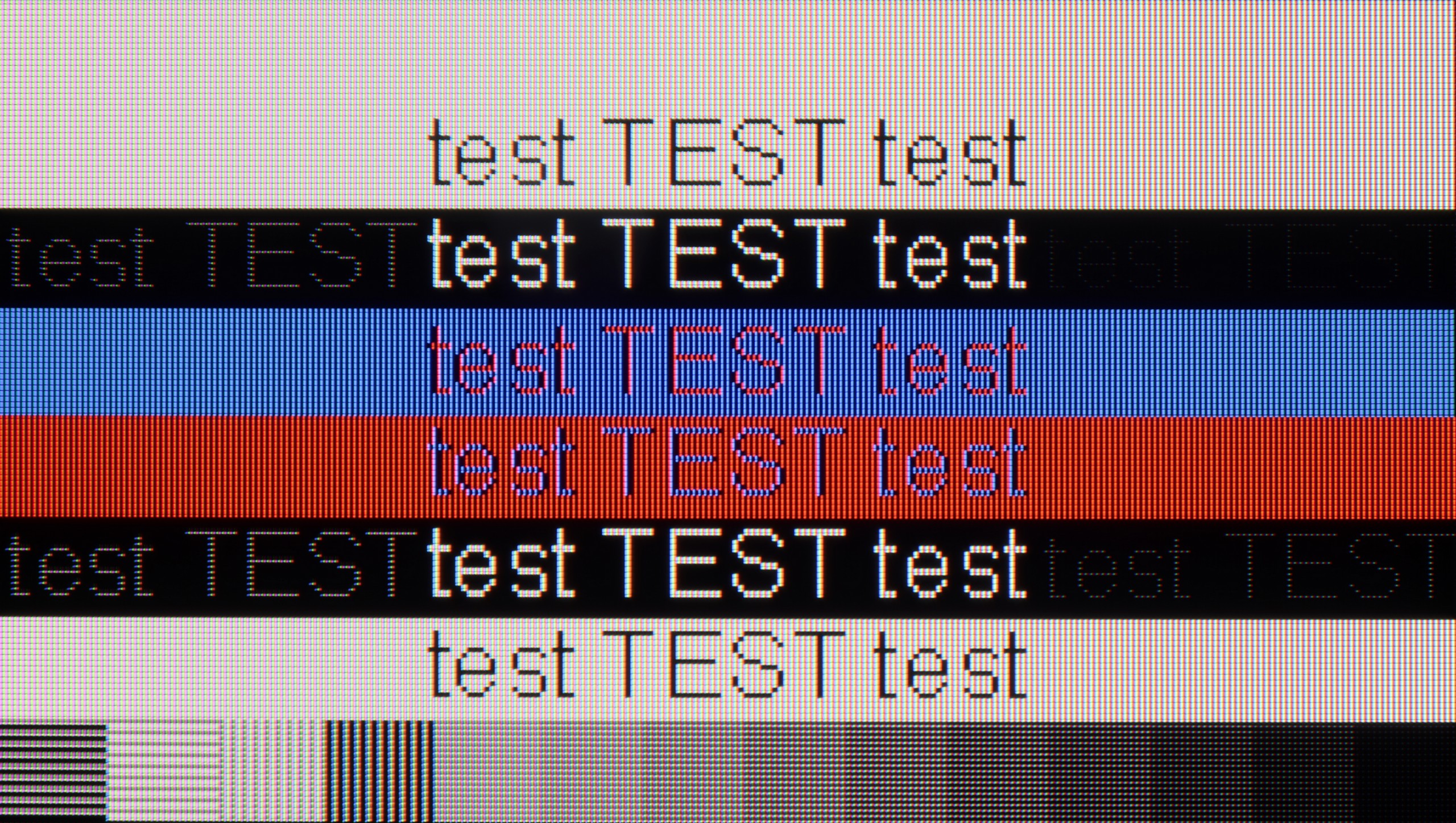
Philips PUS8959 performs excellently as a monitor for use with a PC. With support for chroma 4:4:4, it provides full color clarity, which is crucial for working with text – fonts are sharp and legible, regardless of the background they are on. This makes using office applications, browsing the internet, and graphic editing comfortable and precise.
Additionally, the low input lag offered by the television guarantees smooth and responsive operation, which is important for both everyday tasks and more dynamic applications, such as gaming or multimedia editing. Philips PUS8959 is an excellent choice for users seeking a television that will also serve as a PC monitor, providing high image quality and user convenience.
Although playing on the Q8F is not particularly attractive — it lacks modes with lower resolutions and higher refresh rates, and there are issues with VRR (G-Sync) along with a matrix limited to 60 Hz — as a work monitor, the television performs excellently. The readability of fonts is at a very high level, so working with text or spreadsheets in Excel is a pure pleasure. In this regard, the Q8F can be a real alternative to a large office monitor.
Viewing angles
6.9/10
3.4/10
Philips PUS8959, equipped with an ADS panel, offers quite good viewing angles, definitely better than those found in VA panels. The image retains its quality even when viewed from a greater angle – colors are vivid, and contrast does not deteriorate as much as in televisions with VA panels. As a result, when watching television from different spots in the room, one can still enjoy well-saturated colors and overall image quality, making Philips PUS8959 a perfect choice for larger spaces and for watching together with family or friends.
The viewing angles on the Q8F can be described as average, which stems from the use of a VA panel. When watching the TV straight on, the image looks very good, but as soon as you shift a bit to the side, it starts to fade and lose contrast. The colors gradually lose saturation, and black takes on a grayish hue. This is a typical limitation of this type of panel, and it's hard to expect miracles here. Compared to IPS panels, the difference is clear — although they are weaker in contrast, they maintain color consistency better at an angle. The Q8F performs best in a classic setup, where viewers sit directly in front of the screen. If you plan on watching with a larger group, with people spread out more widely in the living room, the effect may not be as satisfying.
TV efficiency during daytime
6.1/10
5.6/10

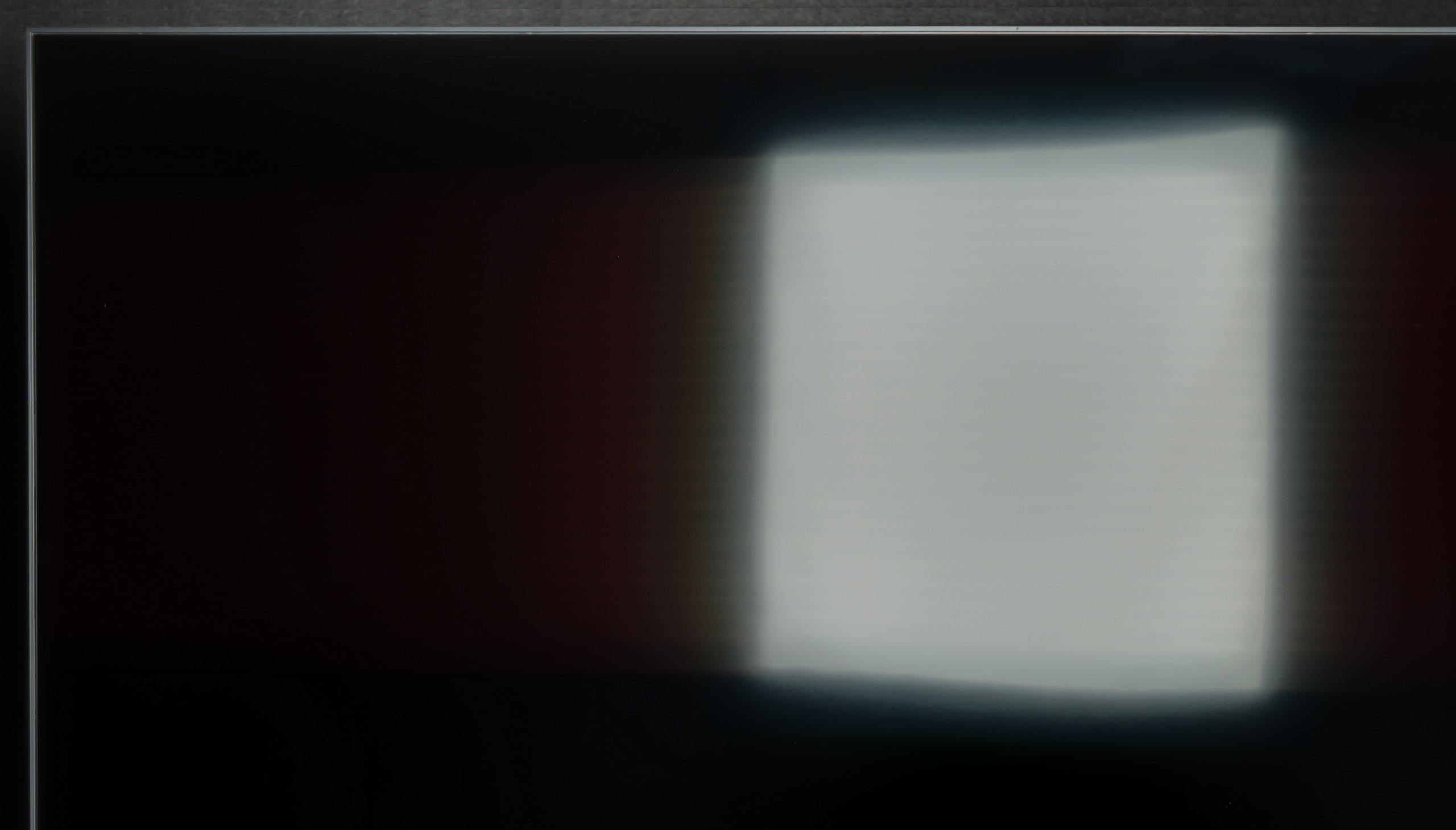

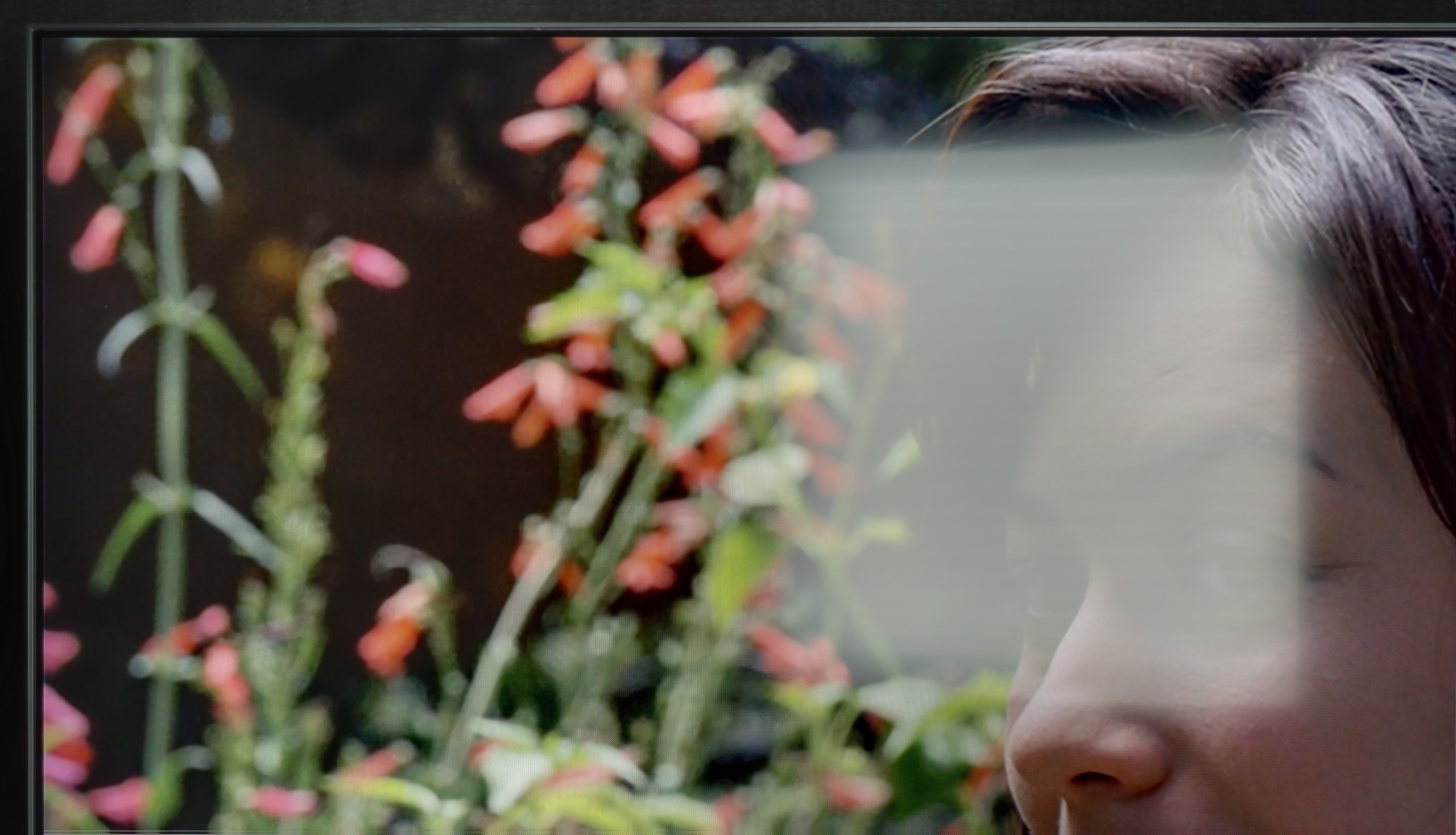
Matrix brightness
Average luminance SDR
Samsung Q8F: 430 cd/m2
Philips The One (PUS8959 / PUS8919 / PUS8909 / PUS8949: 562 cd/m2
Philips PUS8959 has a satin coating on the screen that effectively reduces light reflections, which is advantageous when using the television in bright daylight conditions. However, such a coating causes blacks to take on shades of gray during the day, losing their depth and intensity, which affects the perception of the image in darker scenes.
A brightness level of 562 cd/m² allows for comfortable television viewing during the day, even in well-lit rooms. The image is bright enough to stand out against daylight, and the reduction of reflections ensures decent visibility of content, making Philips PUS8959 a good choice for rooms where lighting levels cannot always be controlled.
The Q8F performs quite well during the day. Its brightness hovers around 450 nits, which proves to be sufficient for moderately bright living rooms. It is not a television that will win the battle against sunlight streaming directly through the window, but under typical home conditions, the picture remains clear and appealing. A major plus is the satin finish on the screen, which effectively reduces light reflections and allows for color saturation to be maintained even when the room is bright. As a result, watching series during the day or evening sports broadcasts with the lights on is not a problem. The Q8F does not aspire to be a cinema television in full sunlight, but as a daily screen in normal home conditions, it performs really solidly.
Details about the matrix
Subpixel Structure:

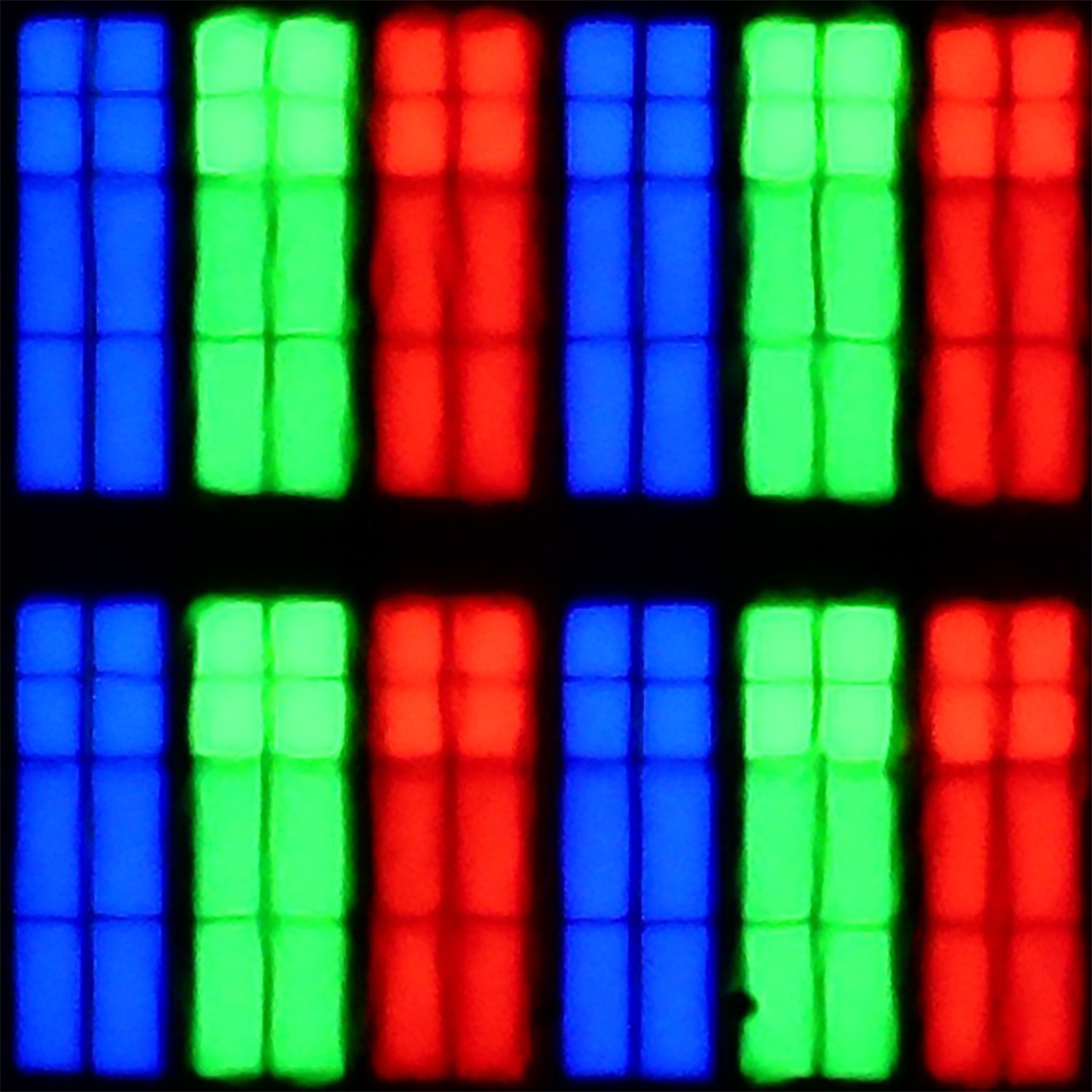
Panel uniformity and thermal imaging:

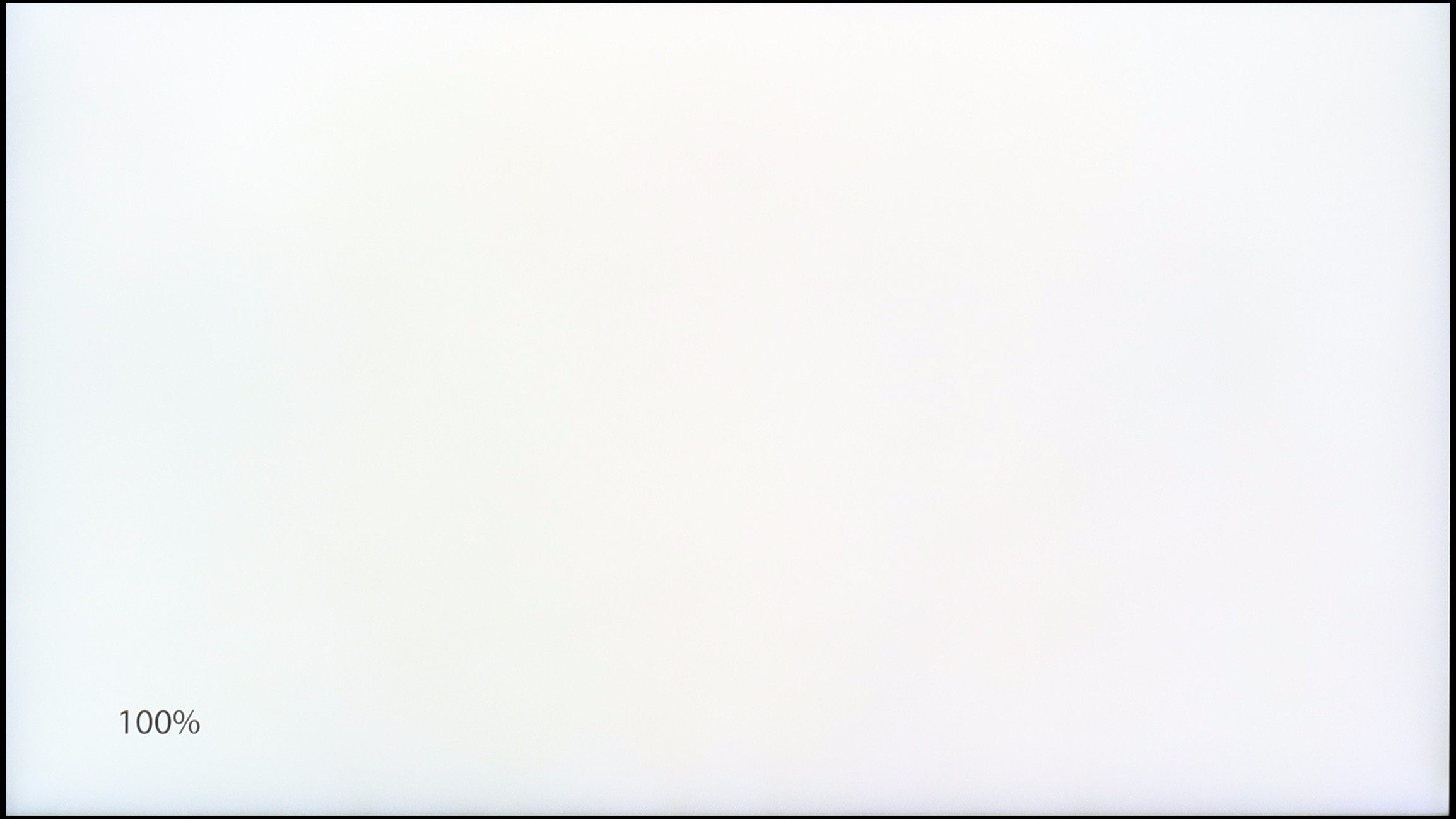
Philips The One (PUS8959 / PUS8919 / PUS8909 / PUS8949
Samsung Q8F
TV features
6.1/10
7.3/10
- HDMI inputs0 x HDMI 2.0, 0 x HDMI 2.1 48Gbps3 x HDMI 2.0, 0 x HDMI 2.1
- OutputsToslink (Optical audio), eARC (HDMI), ARC (HDMI), Mini-Jack (Headphones)Toslink (Optical audio), eARC (HDMI), ARC (HDMI)
- Network InterfacesWi-Fi 2.4GHz, Wi-Fi 5GHz, Ethernet (LAN) 100MbpsWi-Fi 2.4GHz, Wi-Fi 5GHz, Ethernet (LAN) 100Mbps
- TV receptionDVB-T, DVB-T2, DVB-S, DVB-S2, DVB-CDVB-T, DVB-T2, DVB-S, DVB-S2, DVB-C
Classic features:
- Recording to USB (terrestrial TV)
- Recording programming
- Picture in Picture (PiP)
- RF remote control (no need to aim at the screen)
- Backlit remote control
- Teletext
- Audio only mode
- Bluetooth headphones support
- Simultaneous Bluetooth headphones & TV audio
Smart features:
- AirPlay
- Screen mirroring (Windows Miracast)
- Voice search
- Voice search in native language
- Ability to connect a keyboard and mouse



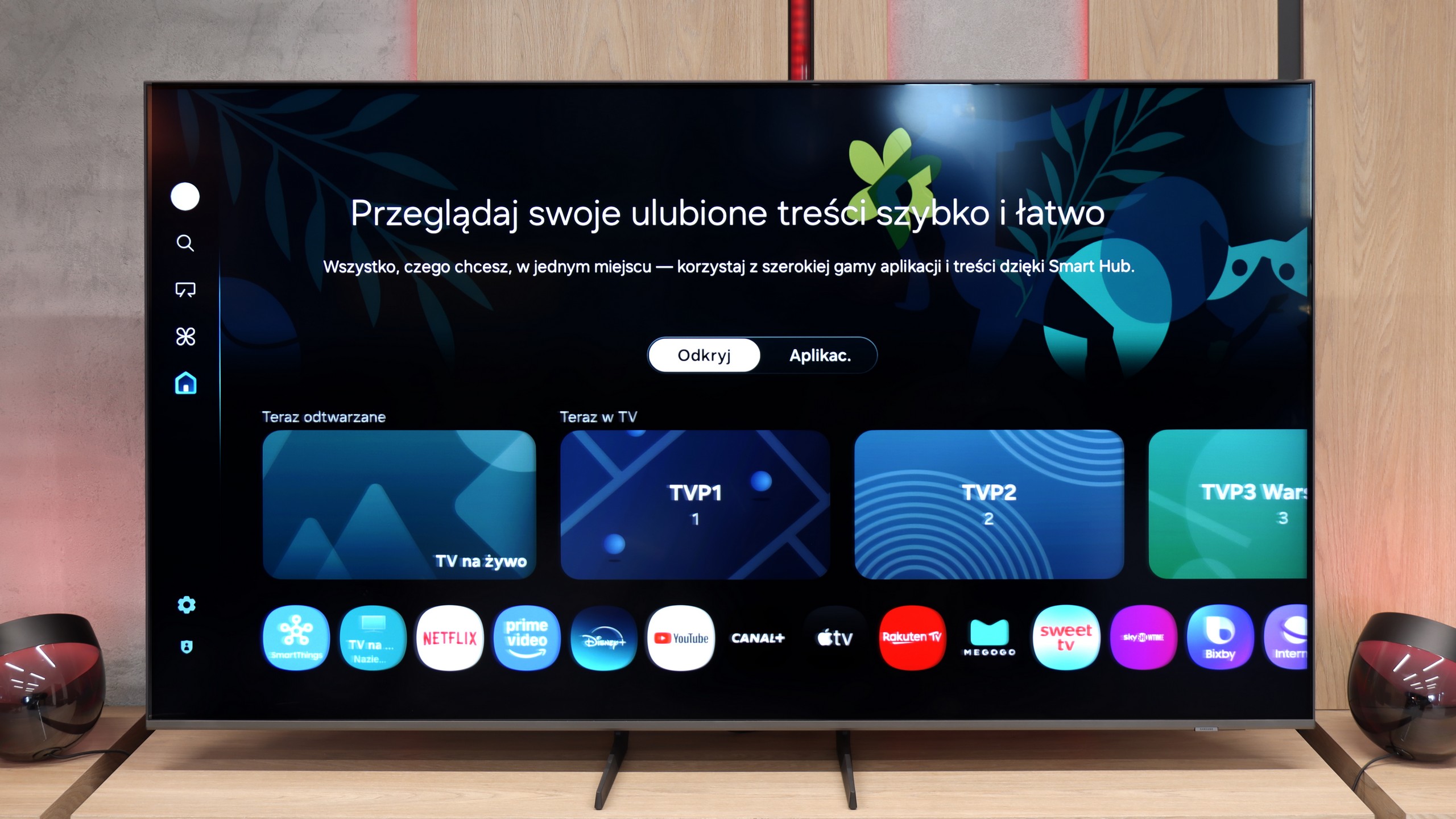
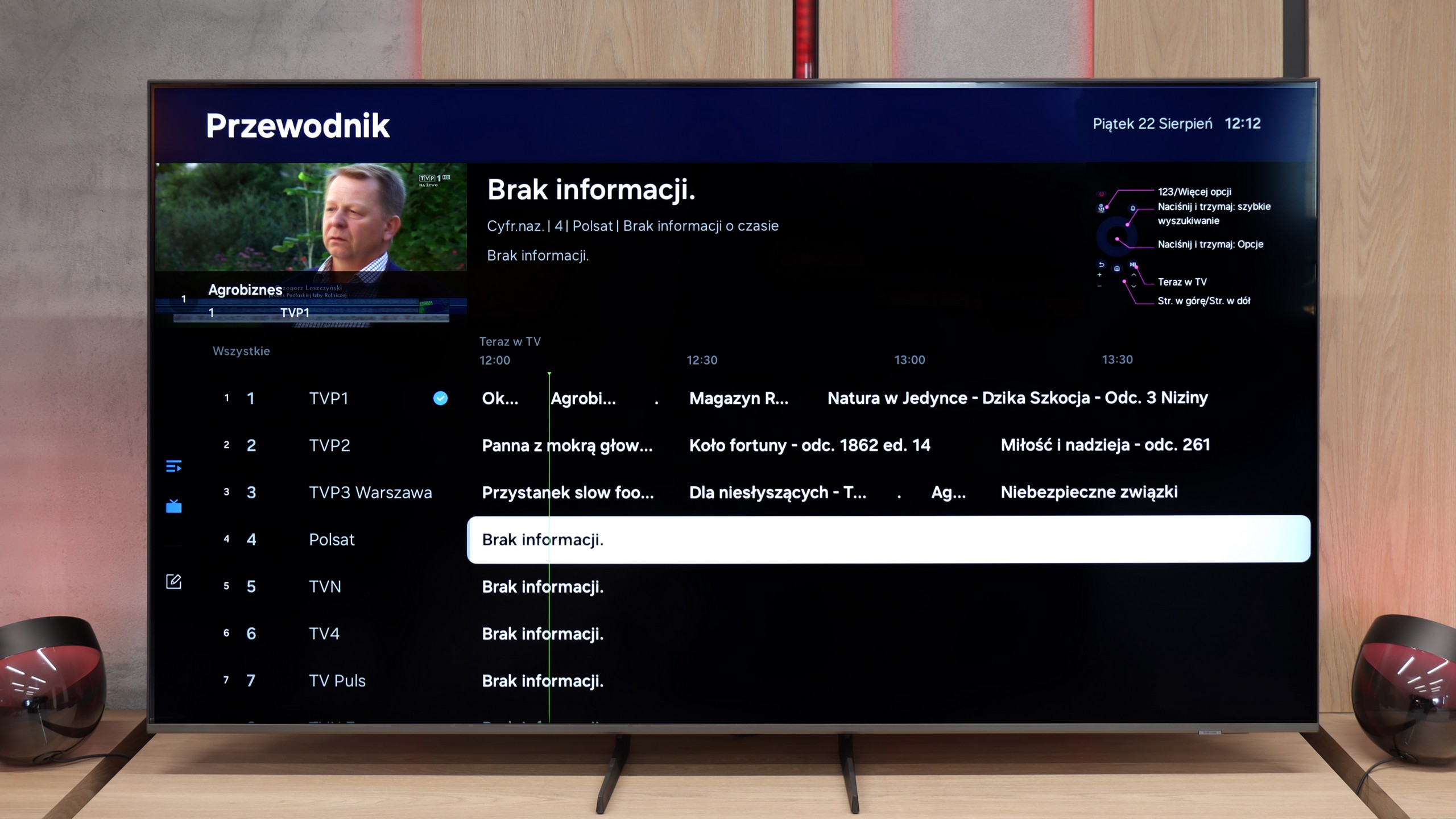
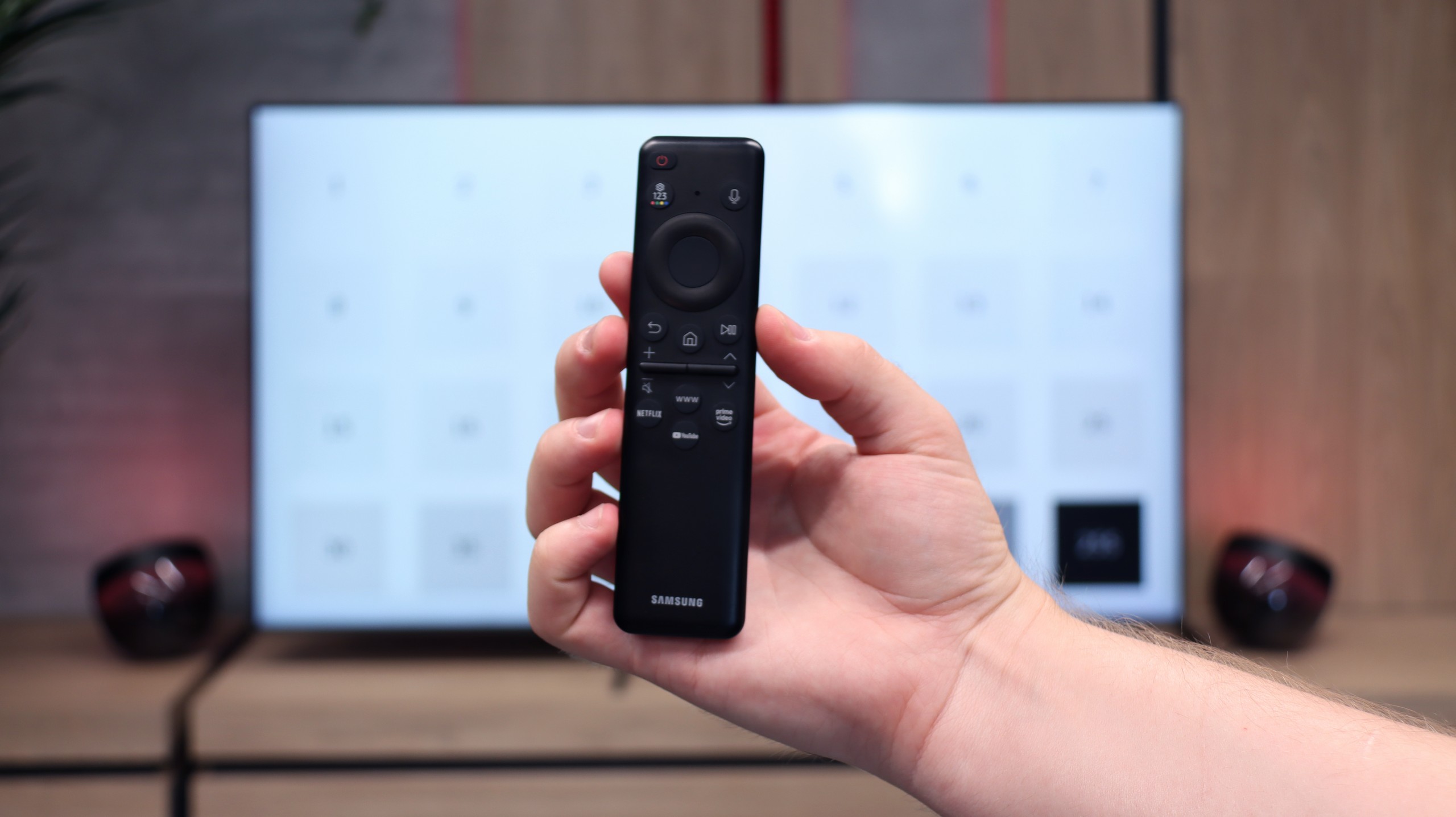
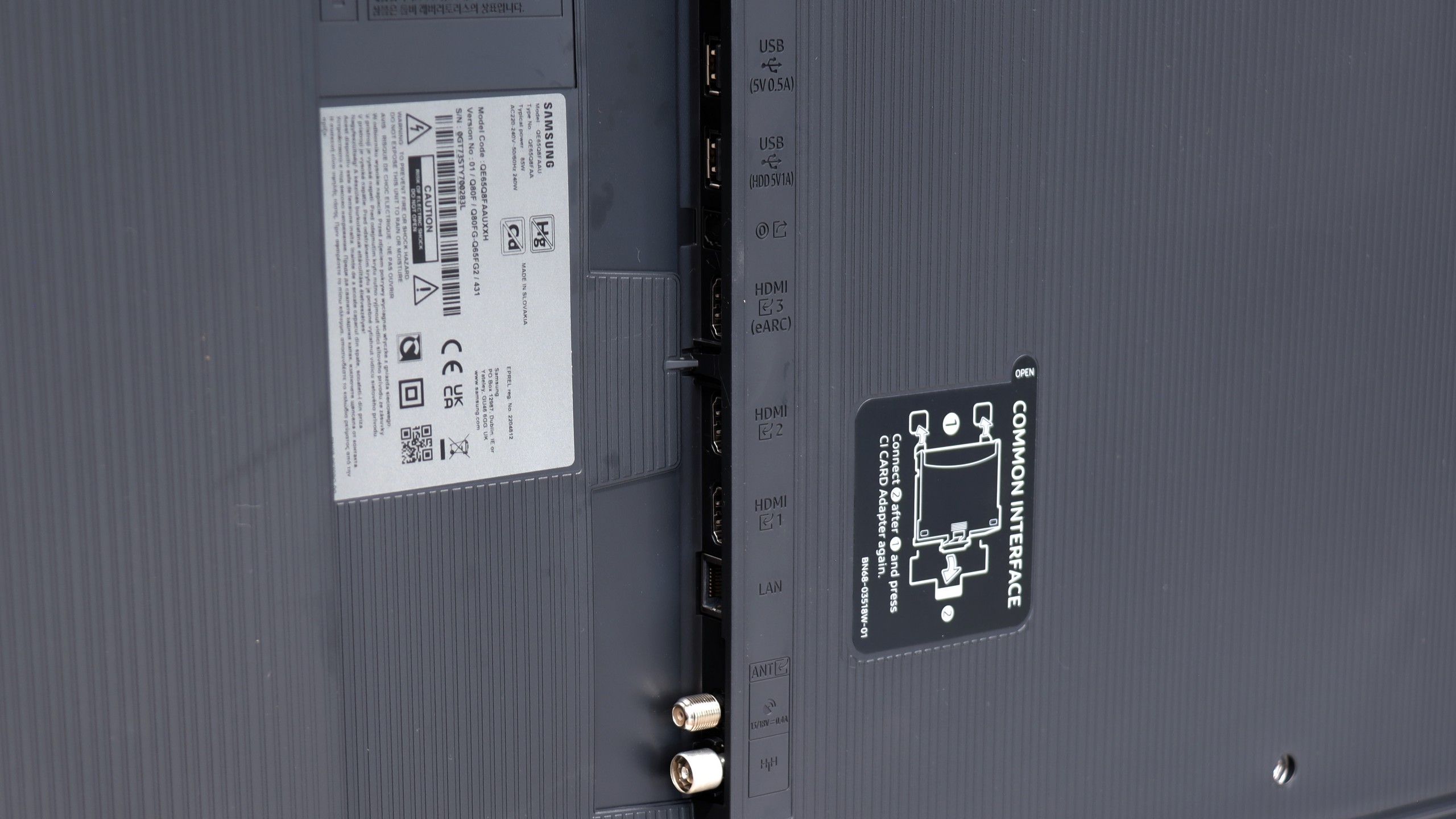
Philips PUS8959 is equipped with a three-sided Ambilight system – the flagship patent of this brand, which has delighted a dedicated group of fans for years. Ambilight relies on dynamic backlighting of the wall behind the TV, matching the content displayed on the screen, which significantly enhances the viewing experience, especially in dimly lit rooms. This effect is unique and adds a certain kind of "magic" to watching, causing many users to choose Philips specifically for this feature.
As for the operating system, Philips PUS8959 uses Titan OS – a system that is still in its early stages of development. Here, you can see growing pains, especially since Philips has moved away from Android in most of its models. Titan OS has a limited number of available apps. This is frustrating for those accustomed to a broader ecosystem like GoogleTV. Additionally, the TV does not have AirPlay functionality, which limits its compatibility with Apple devices and may be a drawback for users looking for a flexible way to stream content.
The user features of Philips PUS8959 are a mix of pros and cons. The remote control included with the TV is quite annoying – it requires direct aiming at the screen, which can be inconvenient. On the other hand, the voice function works without the need to aim, but it only supports English. On the plus side, the remote is backlit, making it easier to use in the dark. The TV does not have PiP (Picture-in-Picture) functionality or the ability to record programs, which is a significant drawback. However, the TV is equipped with Bluetooth, allowing connection to headphones or a keyboard, which can be useful – especially due to the limited number of available apps, which may encourage the use of the built-in web browser.
SmartTV Features: Tizen
In terms of smart features, the Q8F is on par with what Samsung has accustomed us to. On board, we have the Tizen system – fast, intuitive, and well-integrated with other devices. AirPlay, screen mirroring, and simple voice commands work without issues, so the basics are perfectly covered. Additionally, there’s SmartThings, an app that turns the TV into the center of the home ecosystem. You can connect a washing machine, vacuum cleaner, bulbs, or speakers and control everything from one place, including the TV. There’s no shortage of apps within Tizen for watching movies or series either – Netflix, YouTube, Disney+, and Prime Video are readily available. However, it’s worth remembering that Tizen is a closed system, so anyone hoping to install less popular programs may be disappointed.
Classic Television
Classic television fares worse. The Q8F simply serves as a screen here – it will display the image, but we won’t find additional features like USB recording or PiP mode. The remote is small and minimalist. It looks modern, can be charged via solar batteries on the back cover, or through USB-C, but it's important to note that it may not appeal to everyone – especially older users may miss traditional buttons. However, it must be honestly admitted that Samsung has consistently directed its TVs (as well as competitors, who have copied some ideas from them) towards smart home integration, rather than equipment "for grandma and grandpa." Given the immense popularity of the brand, it can be assumed that most users, even older ones, have already grown accustomed to the fact that the era of remotes with a whole range of rubber buttons is slowly coming to an end.
Playing files from USB
8.2/10
9.1/10
Supported photo formats:
Maximum photo resolution:

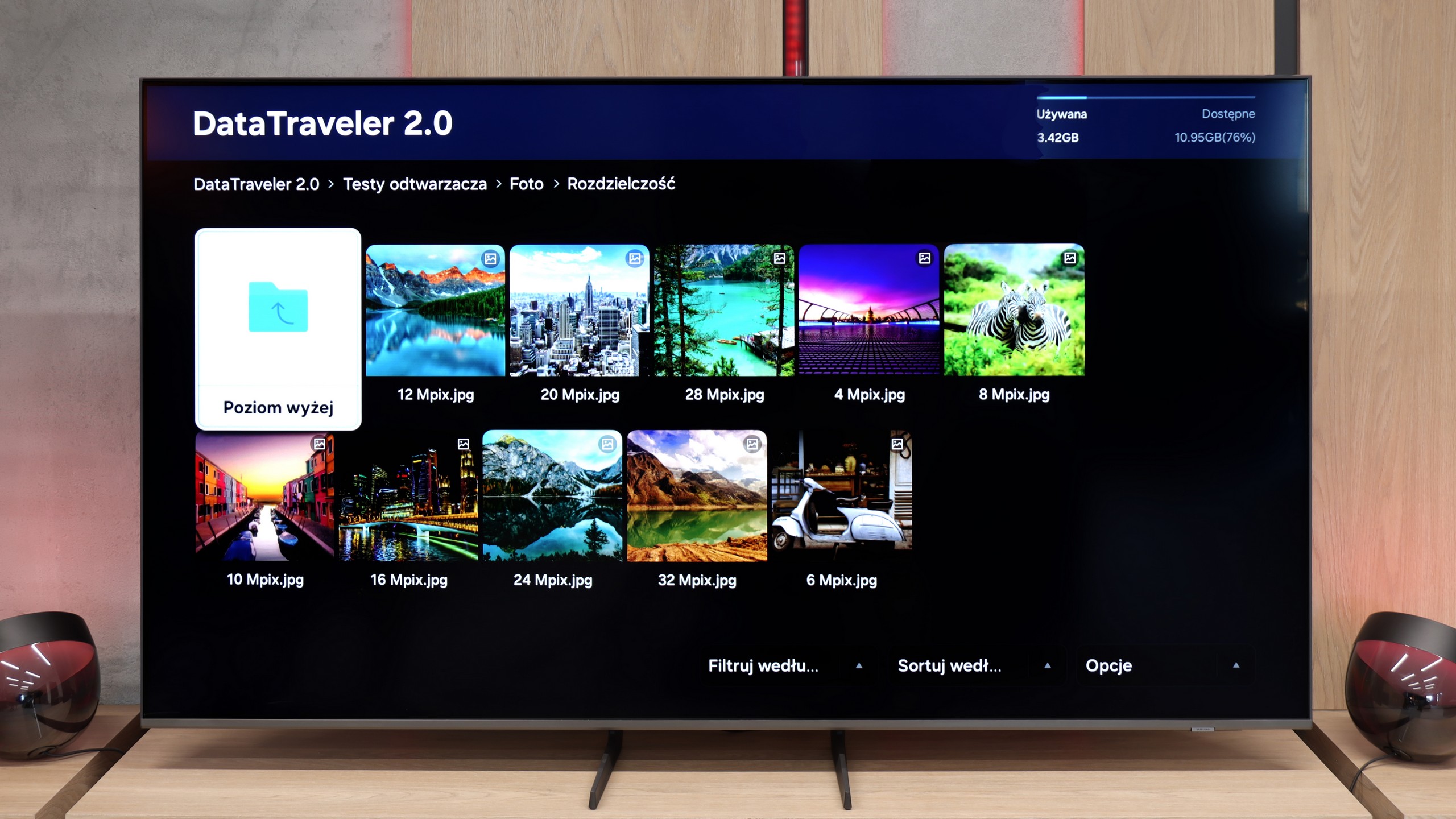
Although the Titan OS system on the Philips PUS8959 TV is still in its infancy, it deserves praise for supporting Polish subtitles embedded in movies, which is a significant convenience for users dealing with external files. If we want to play a movie from a connected USB device, the TV will do so without major issues, providing comfortable viewing without the need for additional subtitle configuration.
When it comes to photos, the TV should have no significant difficulties in playing them. It supports most popular formats, although it lacks support for less common standards such as HEIC used in Apple devices. This means that some photos, especially from newer Apple devices, may require prior conversion to a more standard format in order to be played on the Philips screen.
Samsung Q8F handles playback of files from USB quite efficiently. It supports almost all popular video formats and photos, so you can easily upload a holiday movie or a family album. There are occasional exceptions for less popular photo formats, but the most important JPEG works perfectly, which will be crucial for most users. It's just a shame that Tizen does not allow for the installation of alternative players like VLC. Then even less popular formats would not pose any problem.
Apps
6.2/10
8.7/10














































Sound
6.4/10
6/10
- Maximum volume-84dB
- Dolby Digital Plus 7.1
- Dolby True HD 7.1
- Dolby Atmos in Dolby Digital Plus (JOC)
- Dolby Atmos in Dolby True HD
- DTS:X in DTS-HD MA
- DTS-HD Master Audio
The sound of the Philips PUS8959 unfortunately leaves a lot to be desired. Although the low frequencies can be heard in the playback, the bass is very weak, which results in an overall unsatisfactory sound quality. The TV plays average, especially when compared to more advanced audio systems available on the market.
Despite the average quality of the speakers, the TV supports all the essential audio codecs, which may please users using external home theater systems. Thanks to compatibility with various audio formats, the Philips PUS8959 can offer good audio experiences when connected to appropriate external speakers or a receiver, providing a fuller, more cinematic sound.
The sound on the Q8F can be described as acceptable. You can hear a slightly defined bass, but it is really minimal – the slim design of the TV simply doesn't allow the pair of 2 × 10 W speakers to spread their wings. This is a typical scenario for most TVs: if someone cares about truly cinematic experiences, it's worth considering a soundbar. Samsung has a really wide range in this category across various budgets, so it's easy to find something suitable. The TV itself will work for watching traditional television and series from time to time, but you shouldn't expect much more in terms of sound excitement.
Acoustic Measurements
No acoustic data
84dBC (Max)
75dBC
